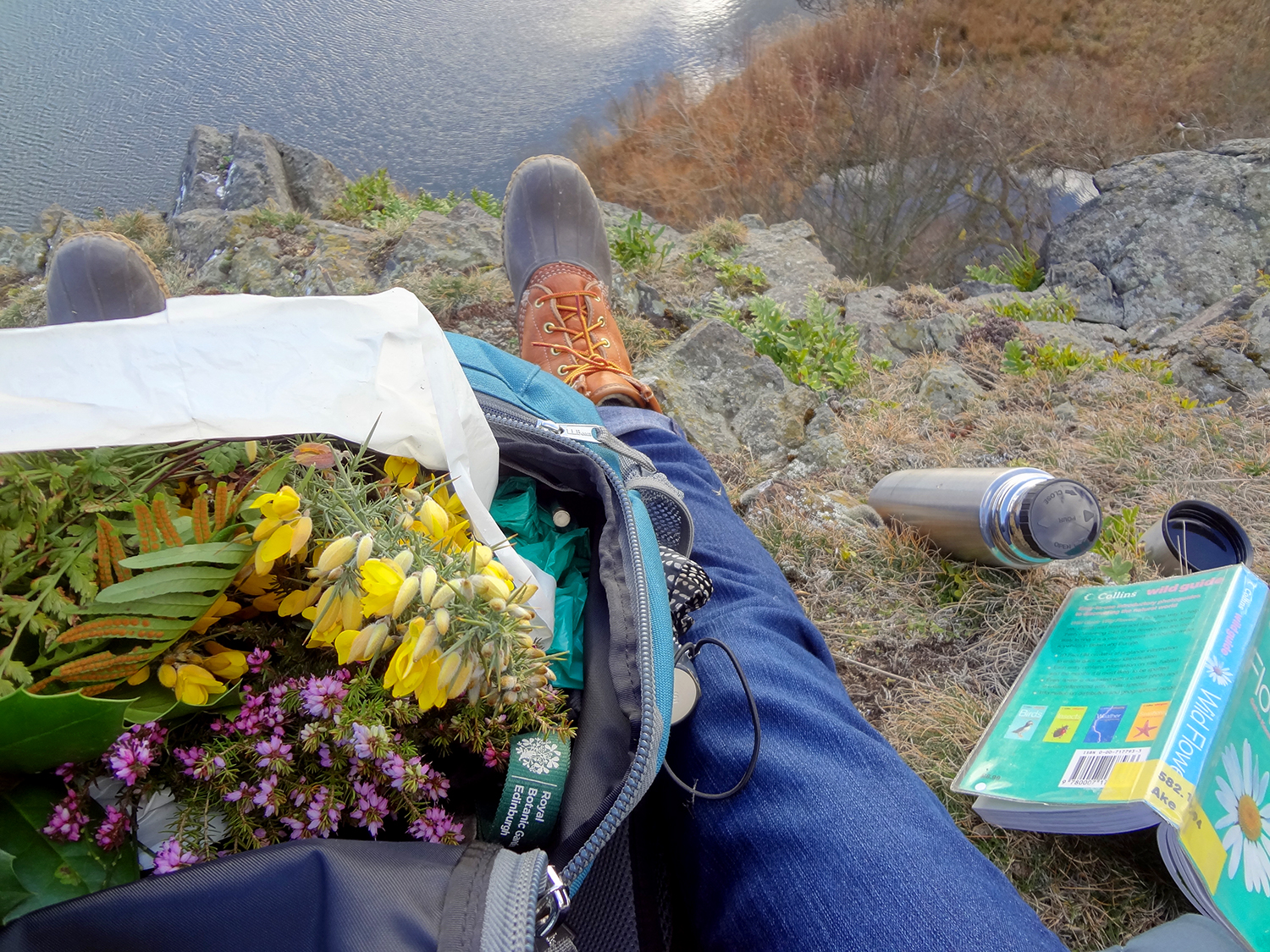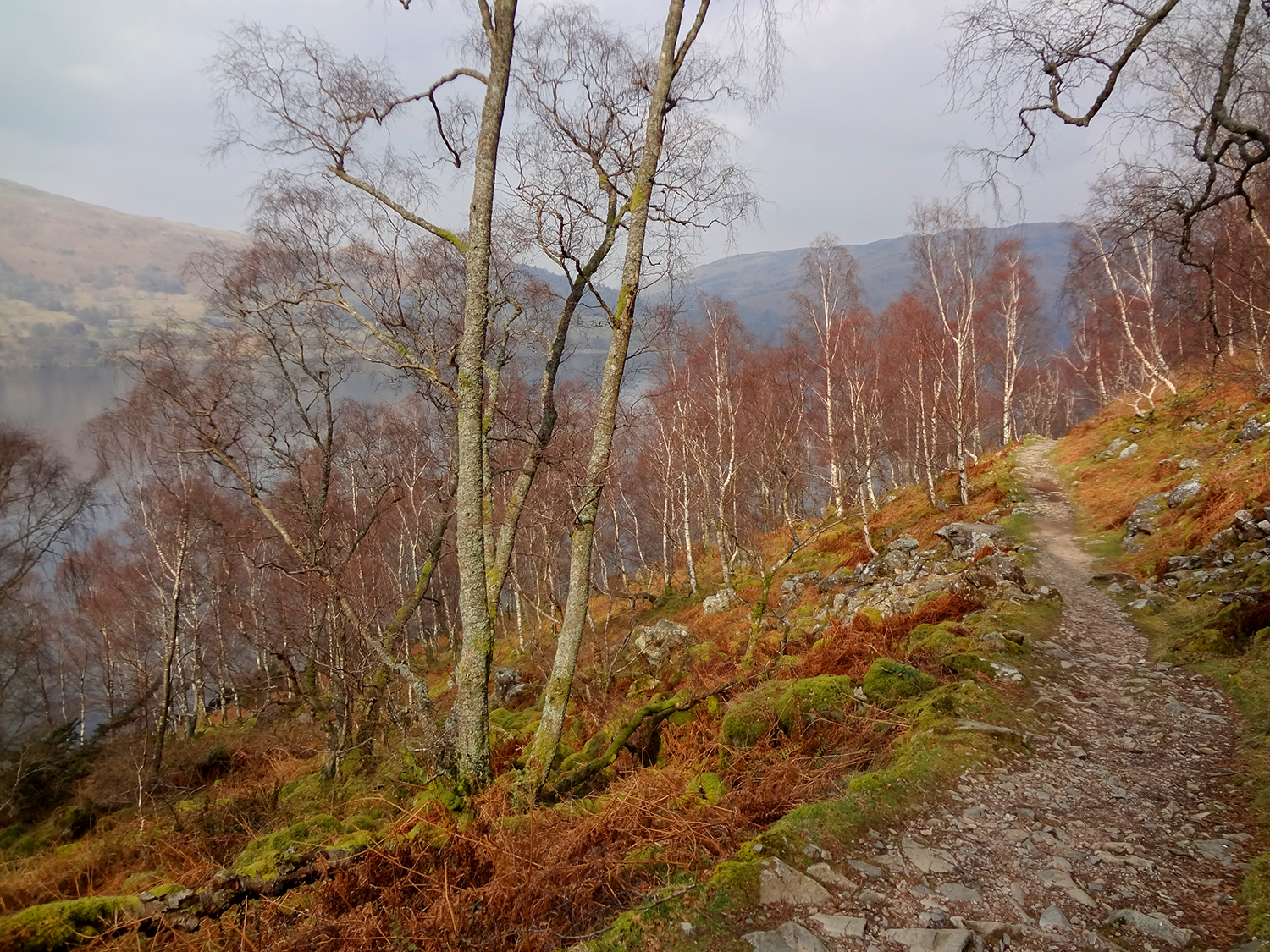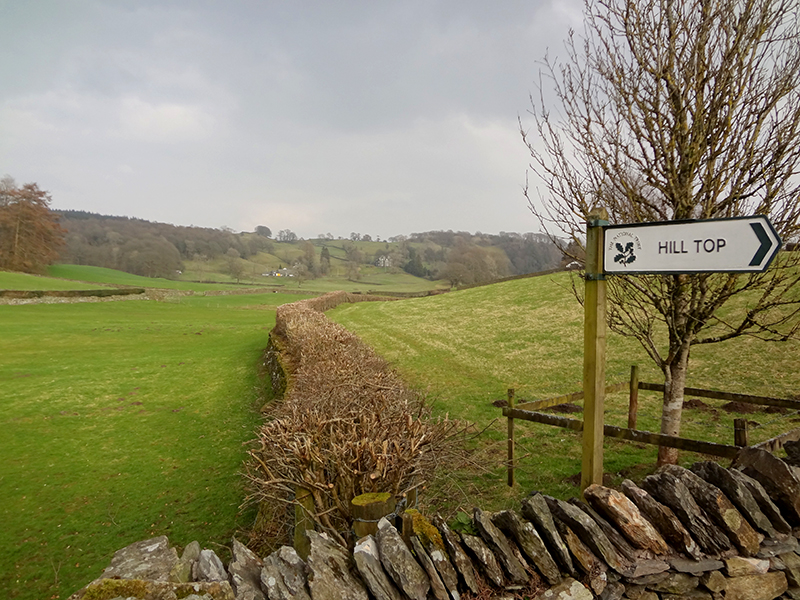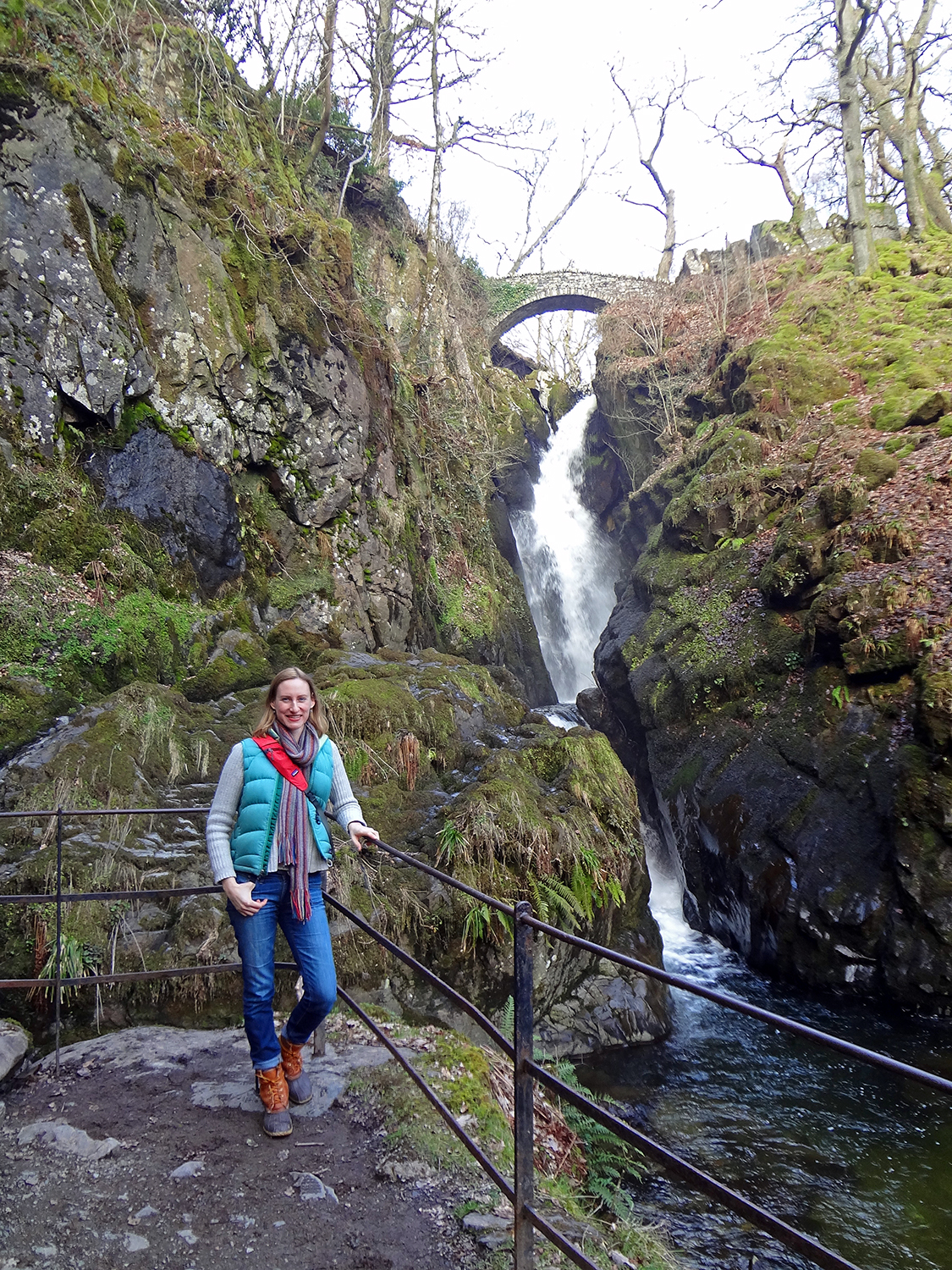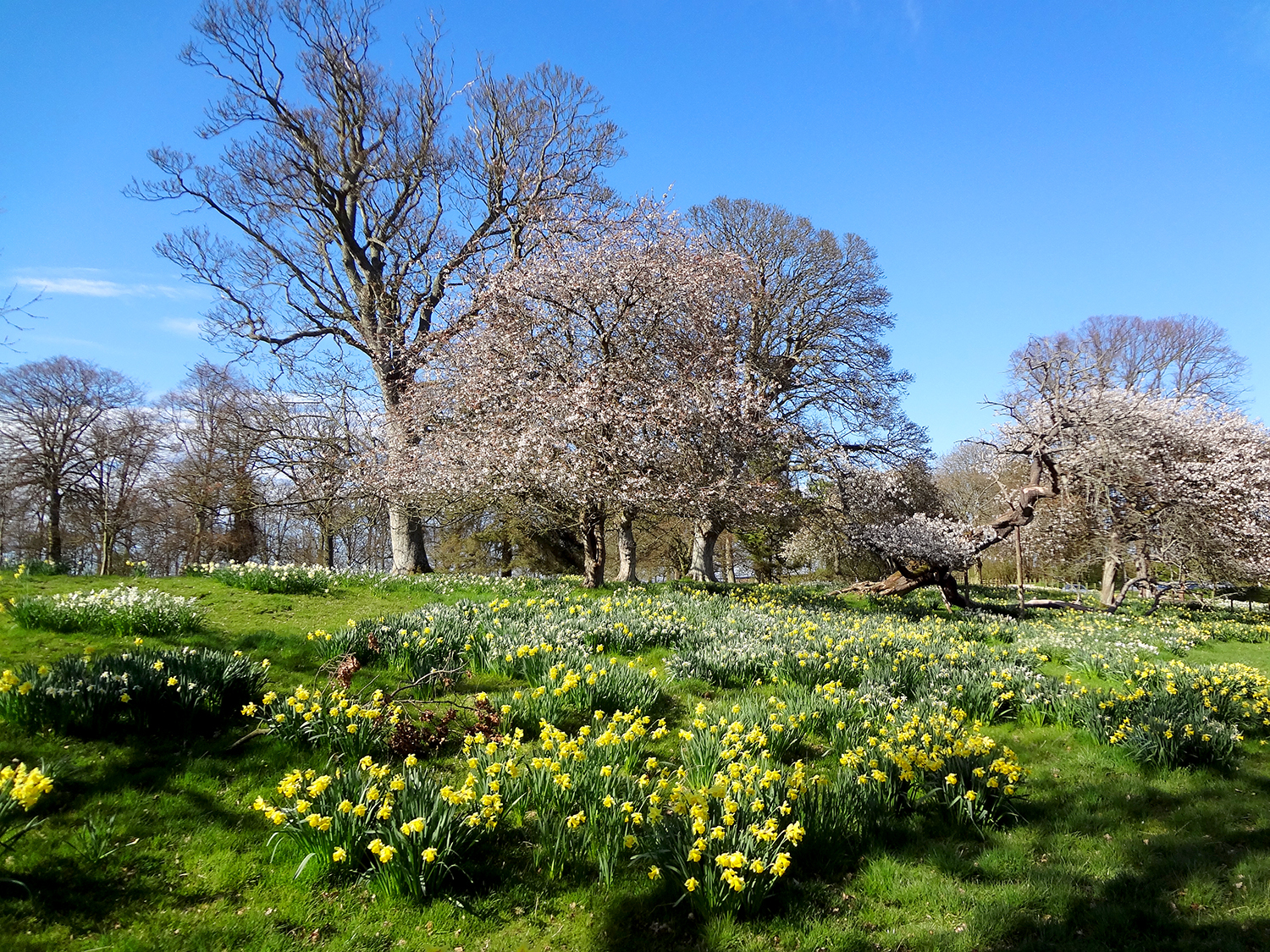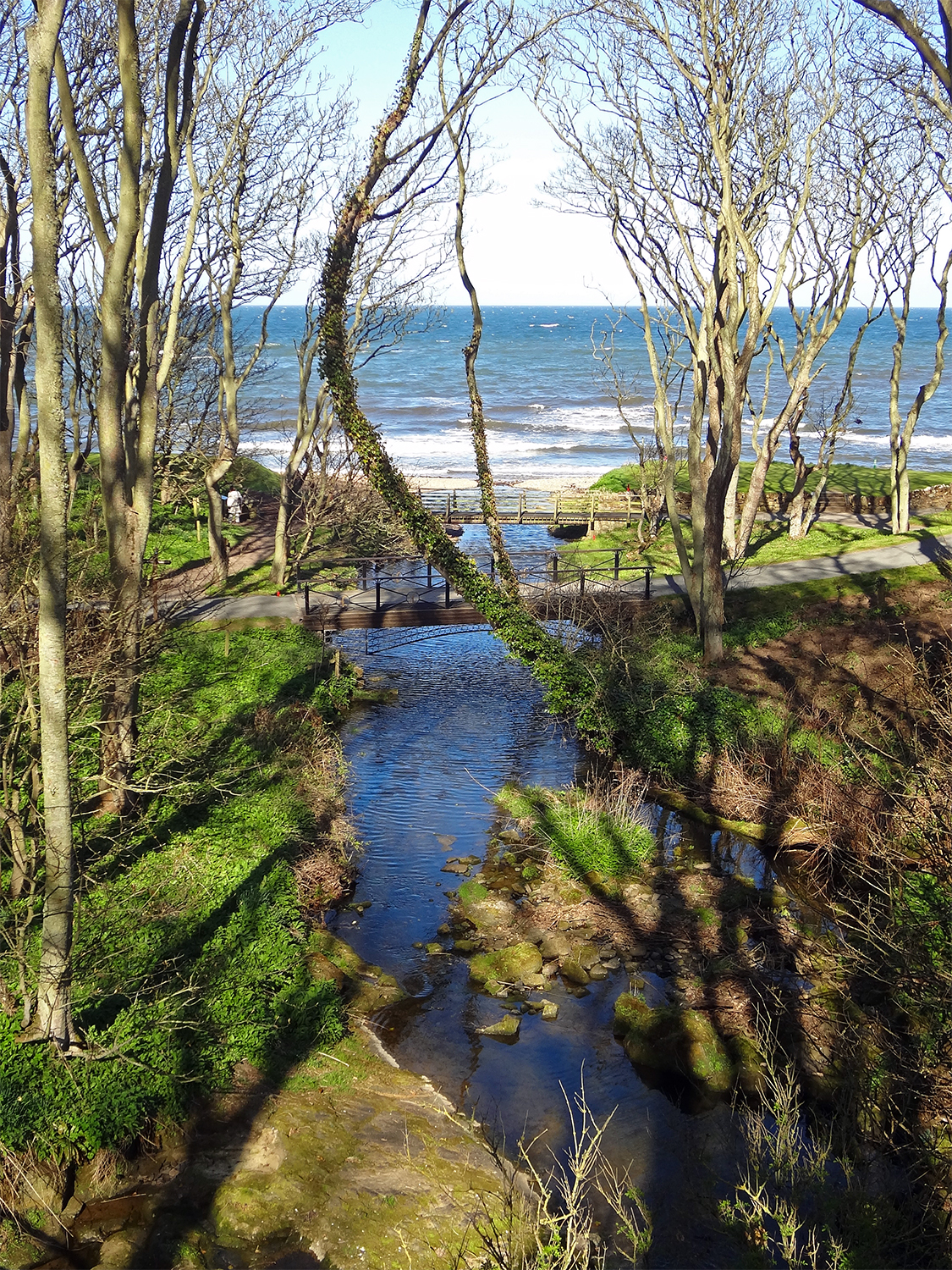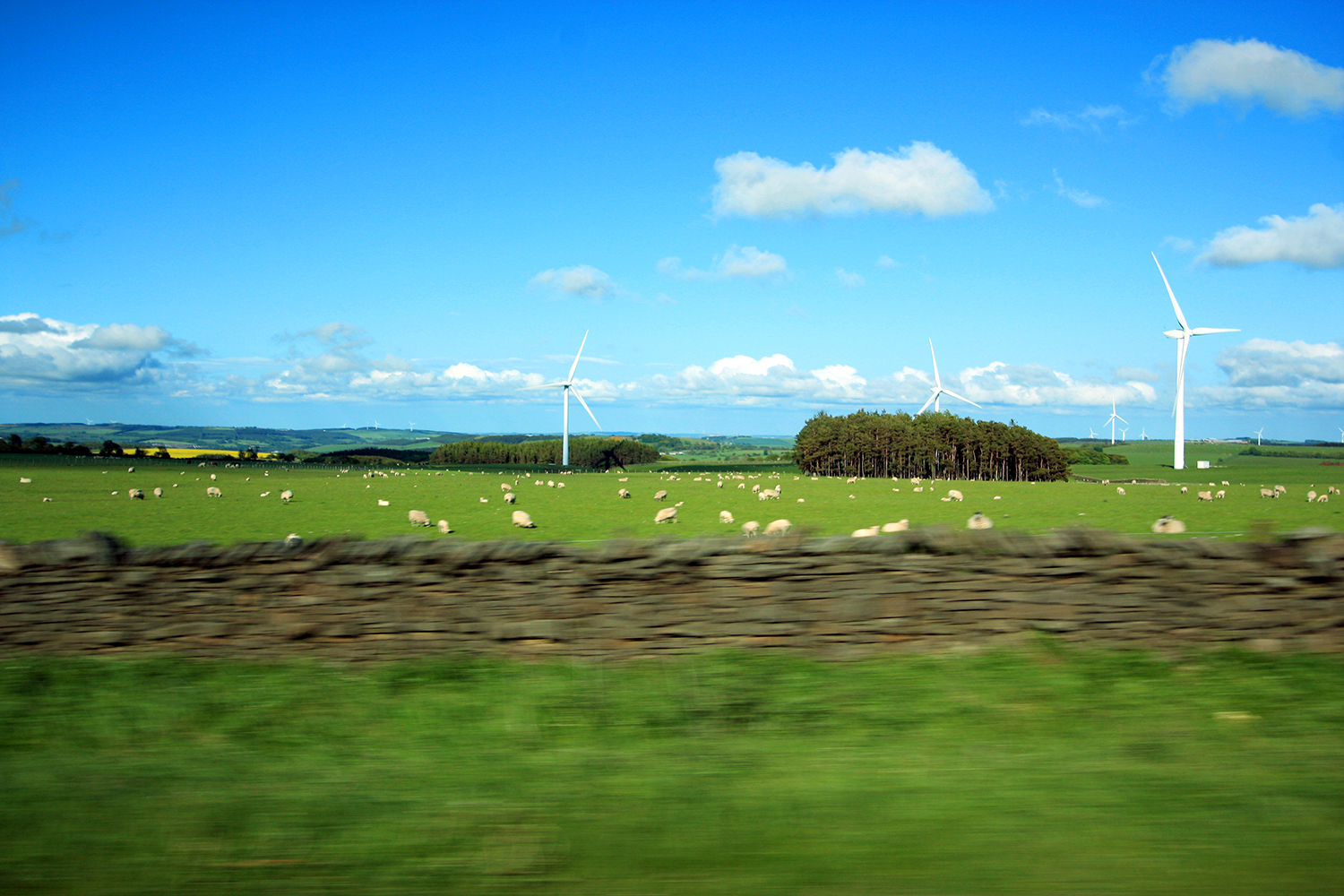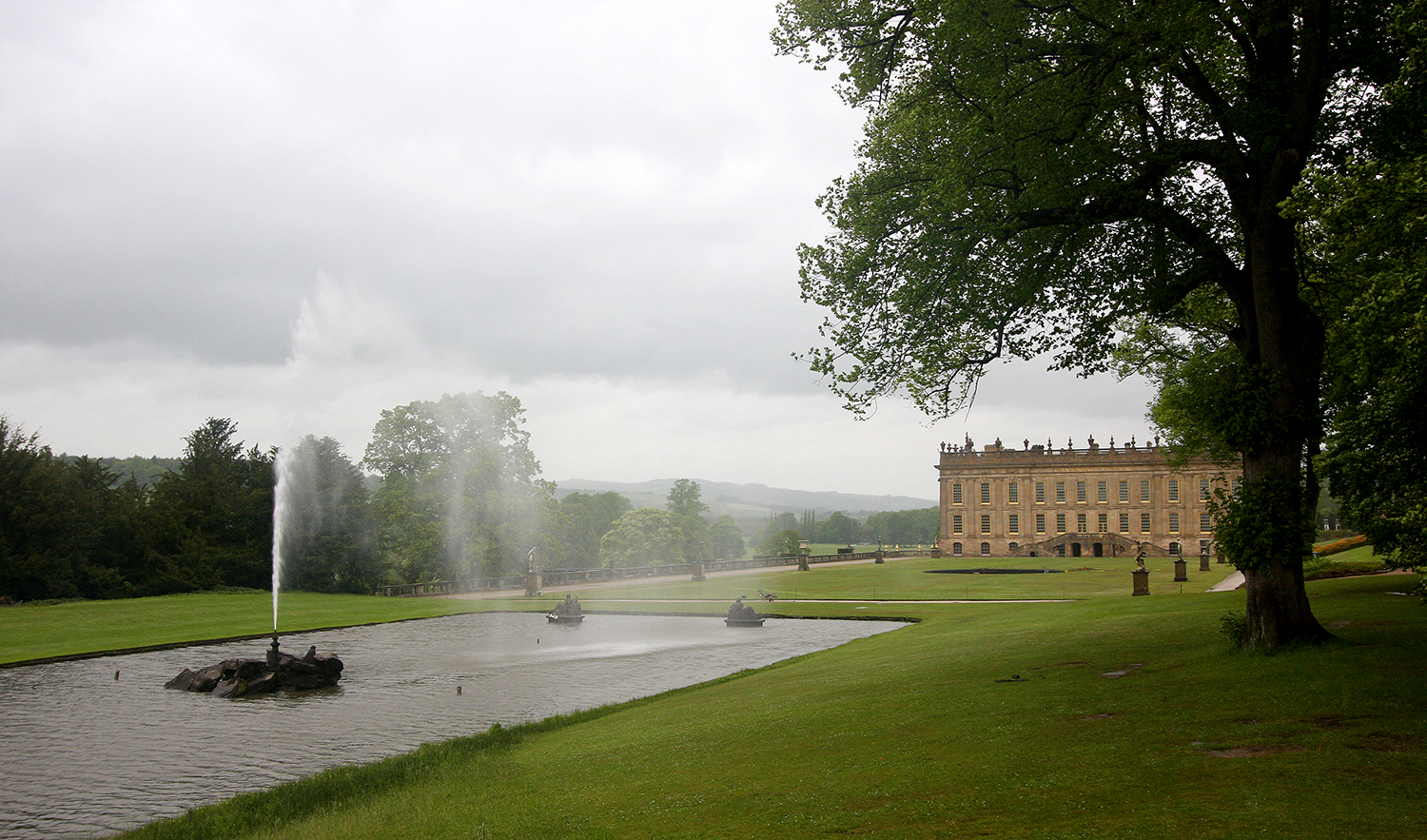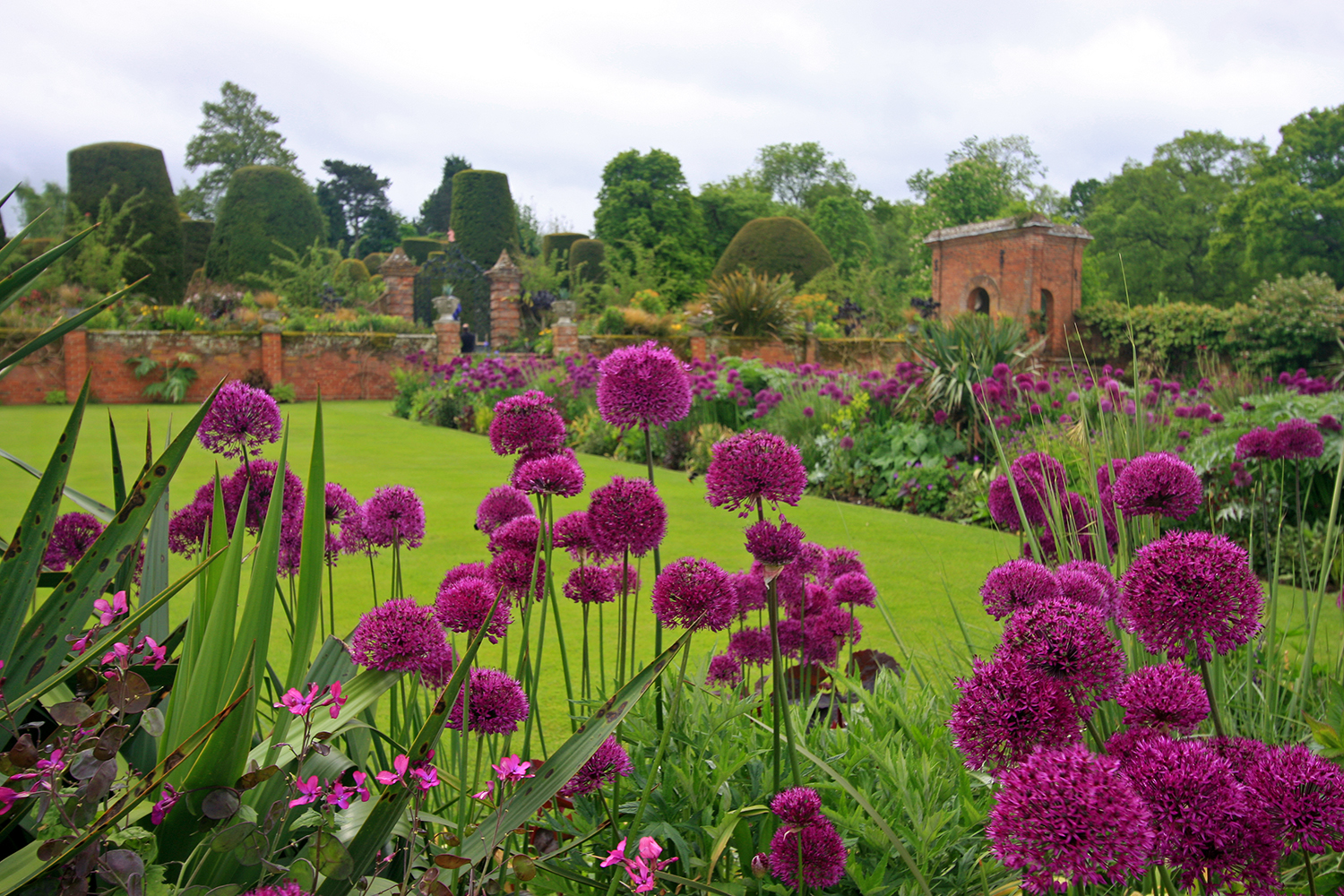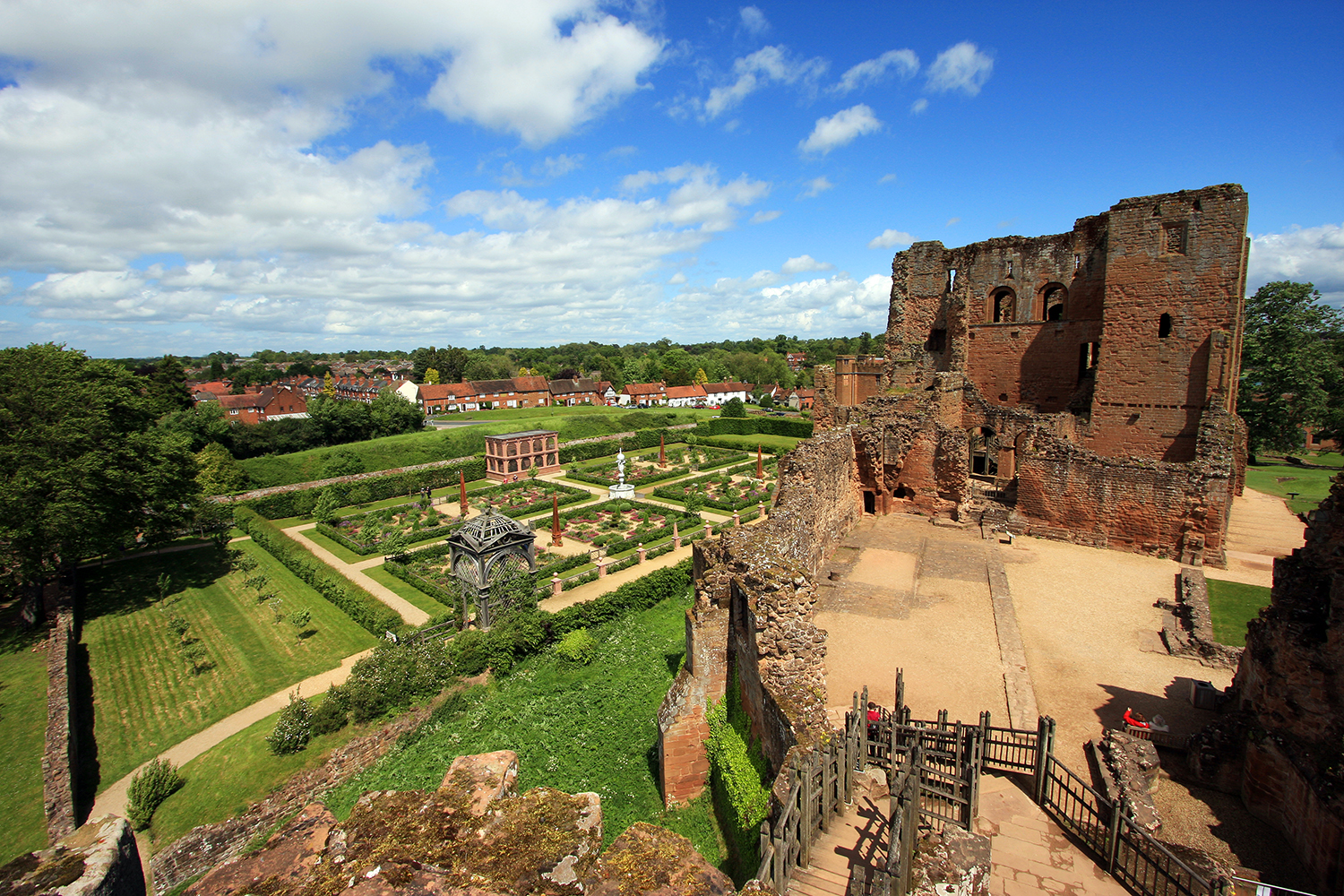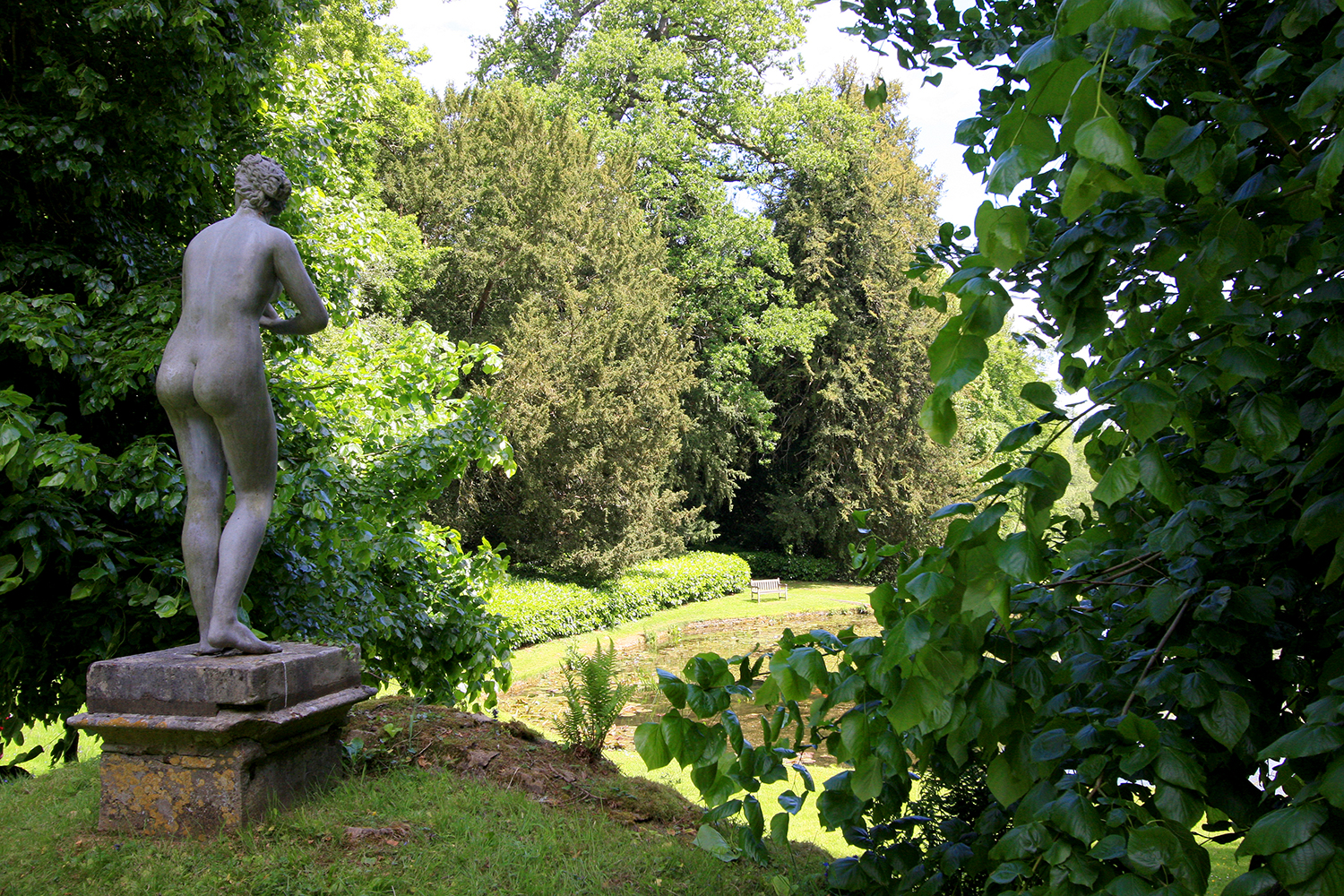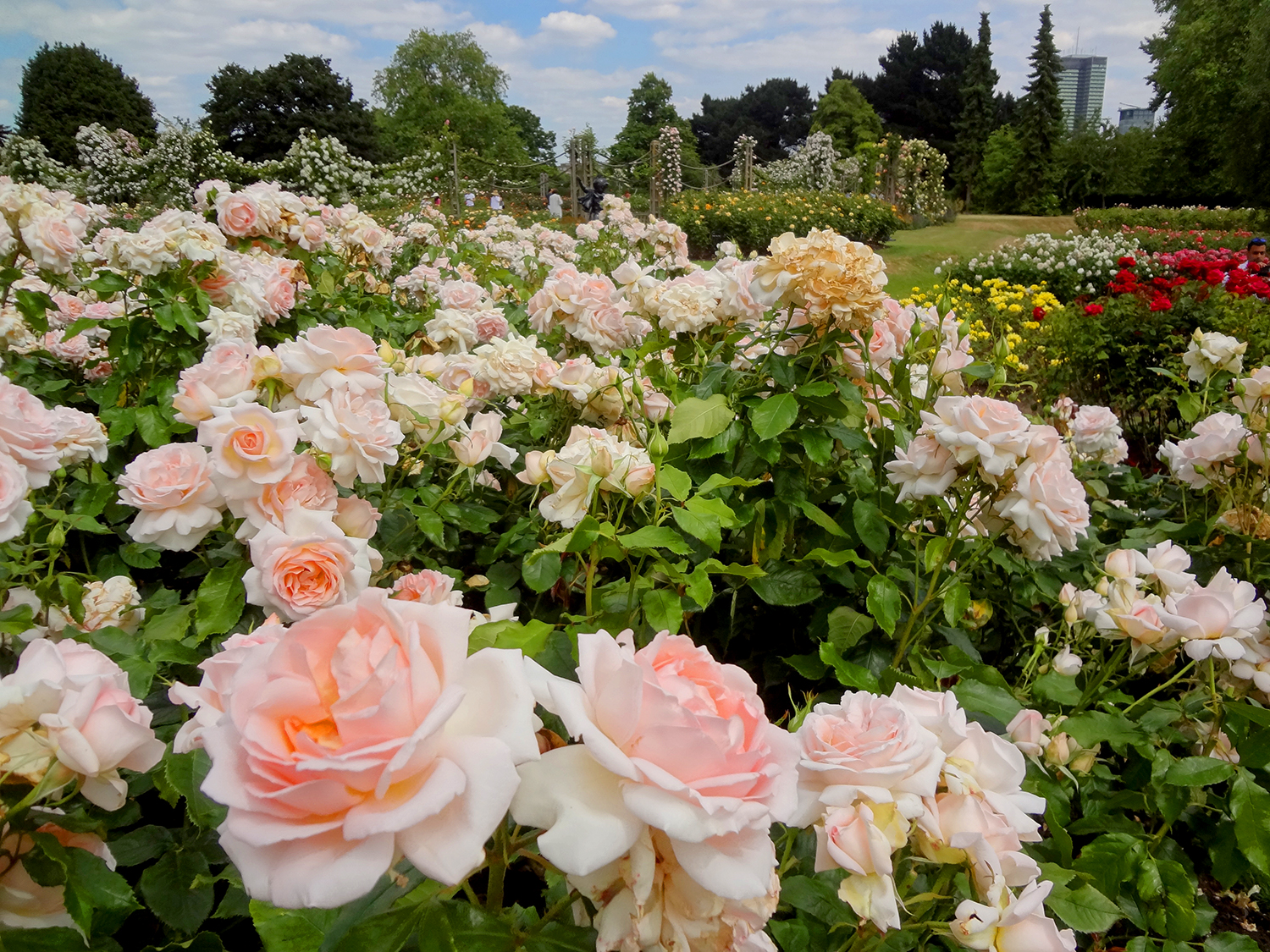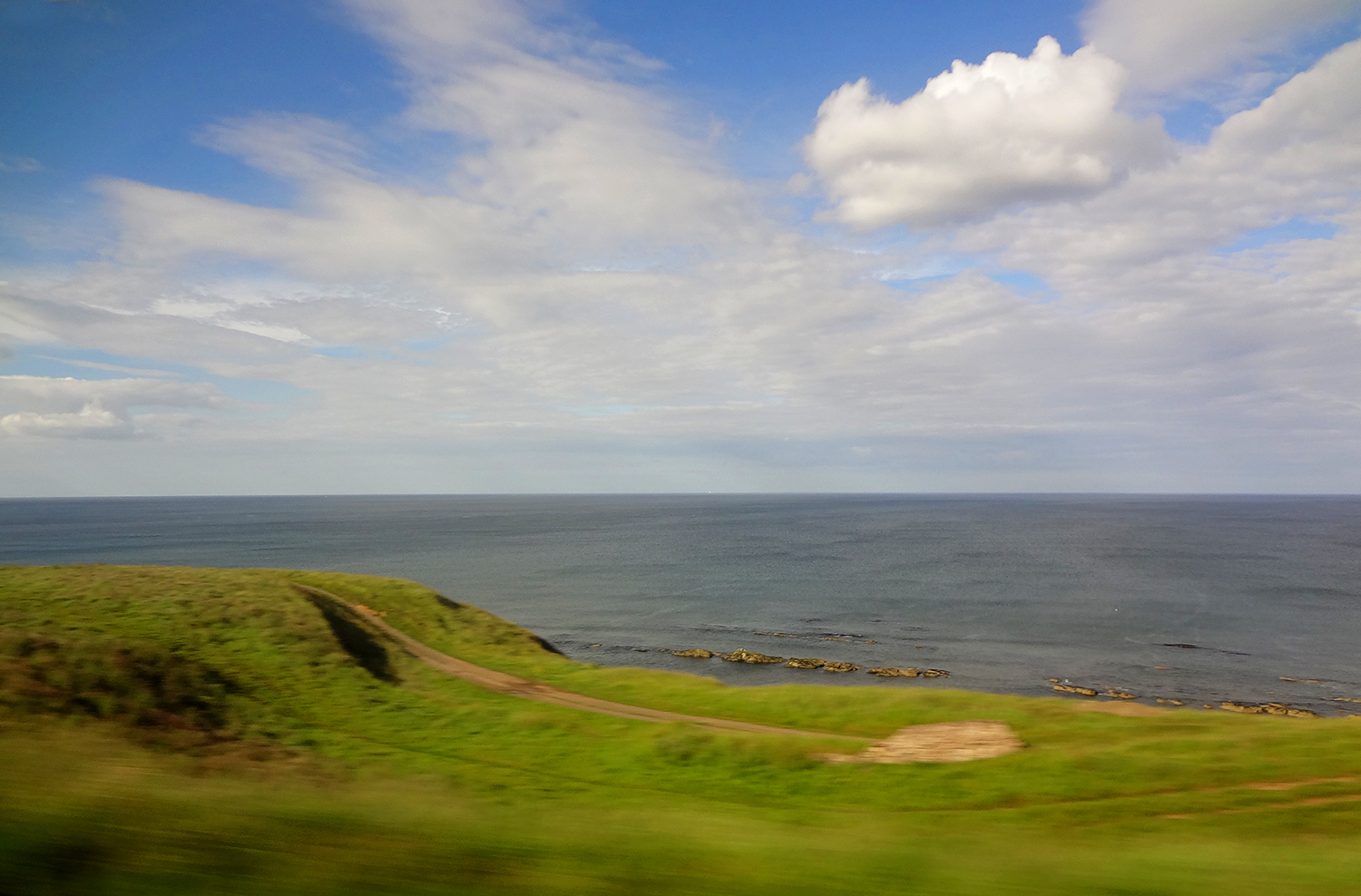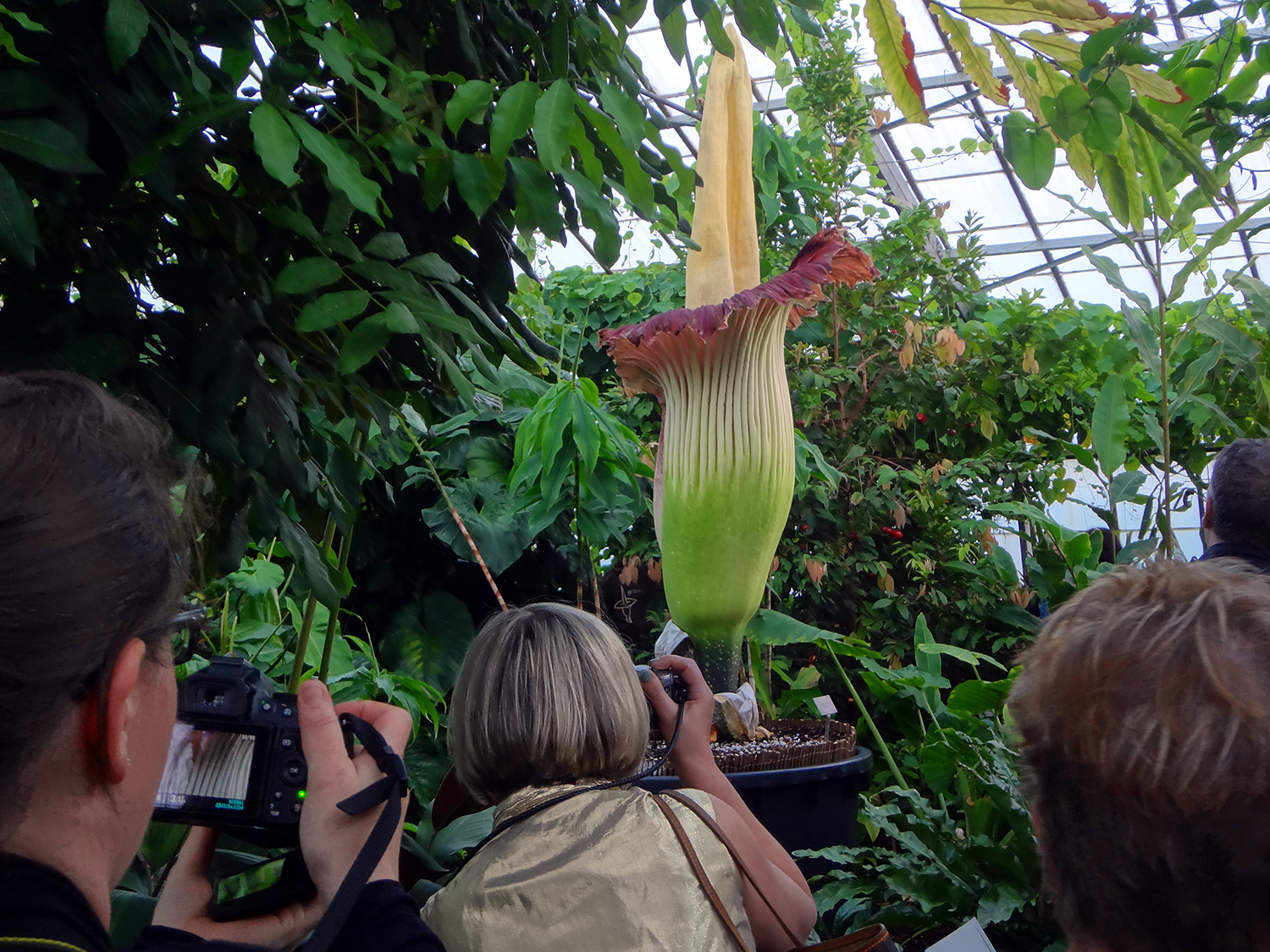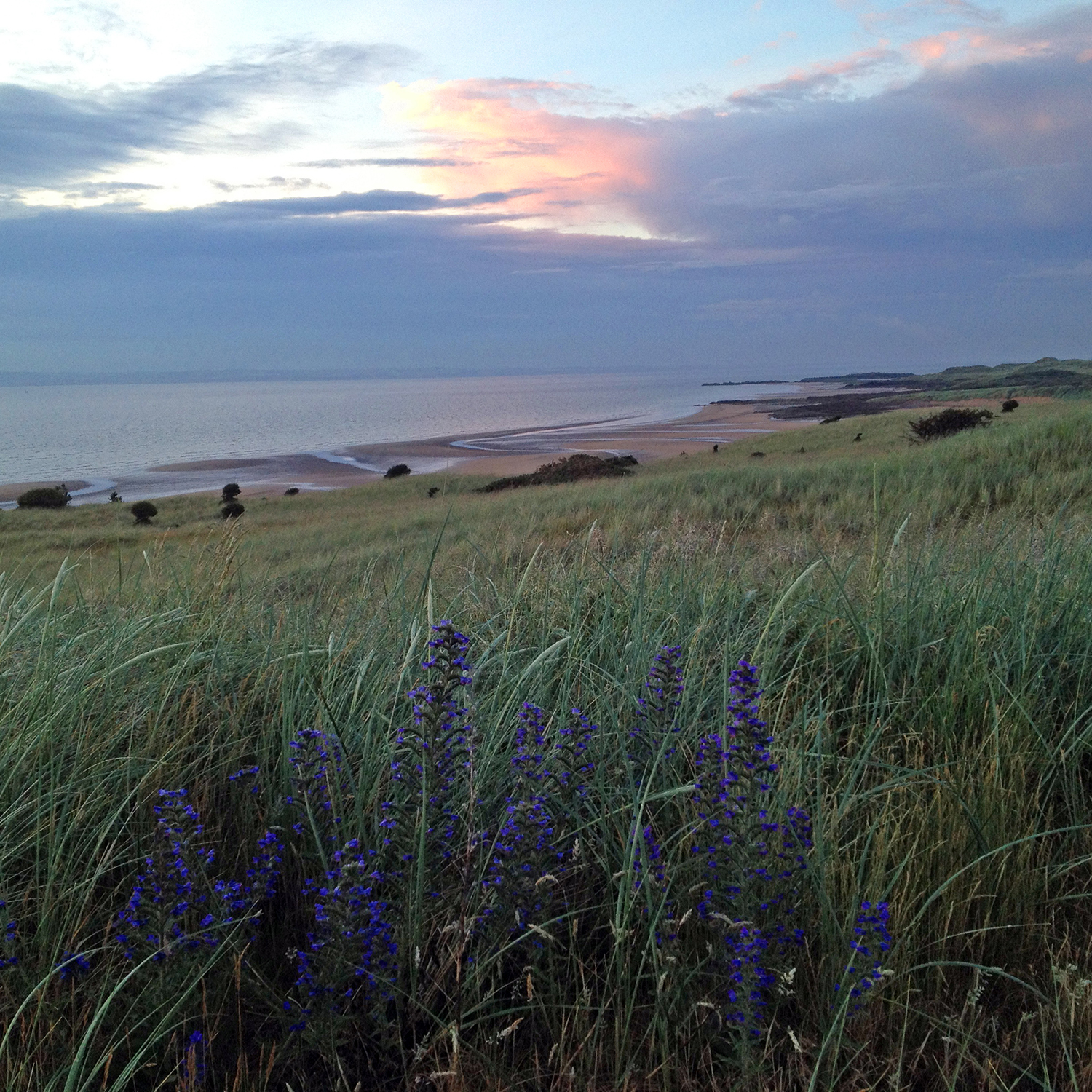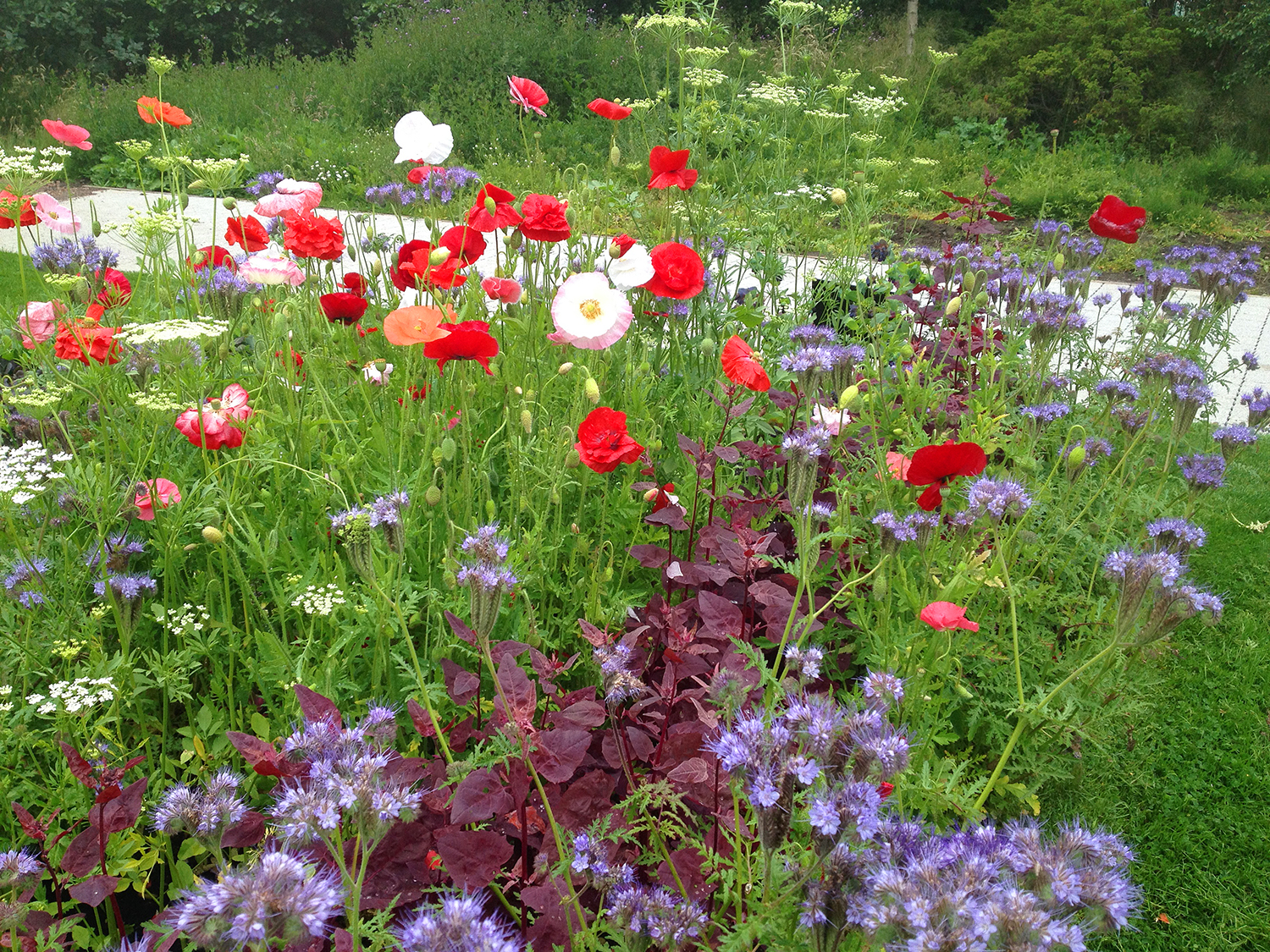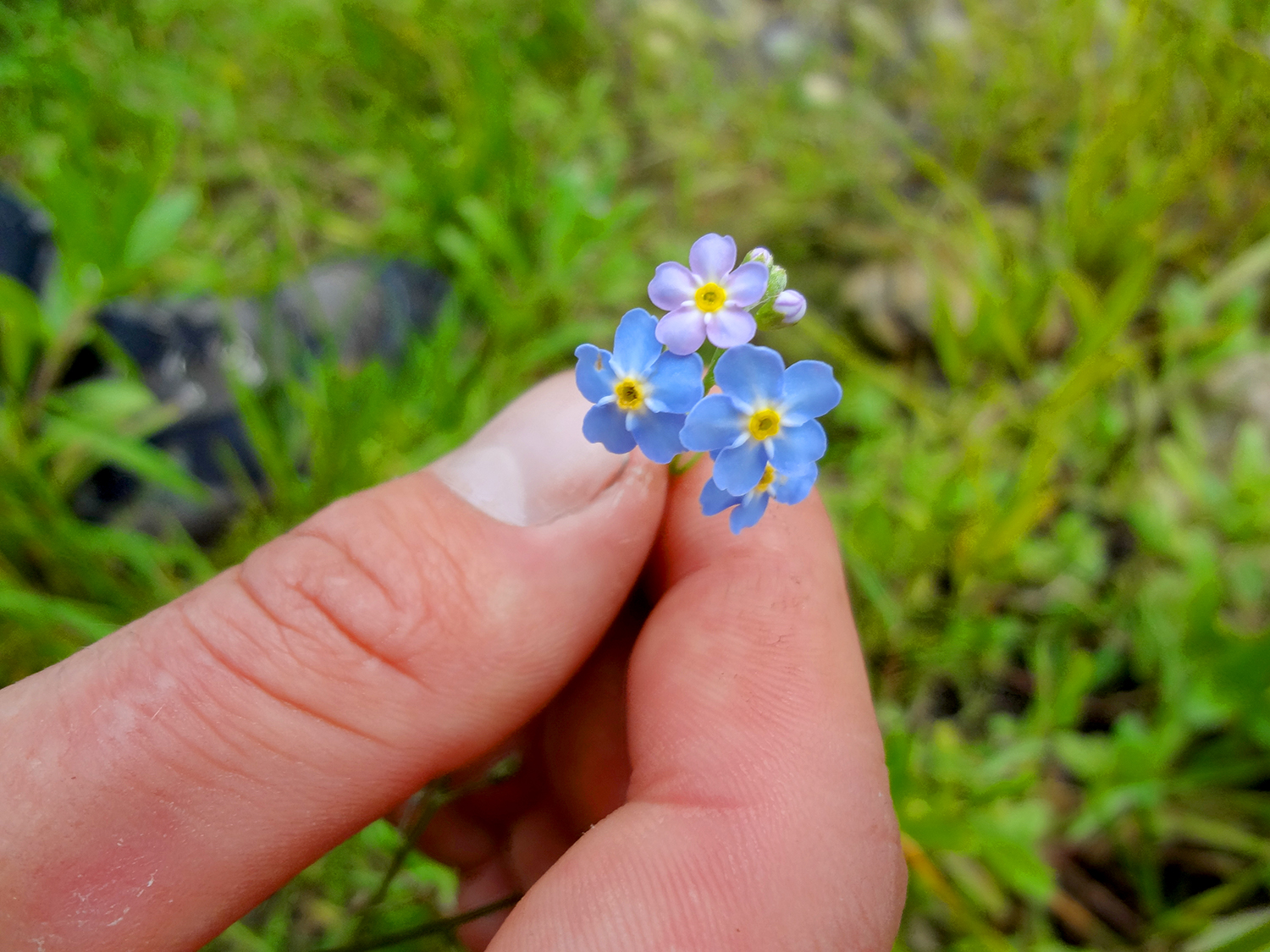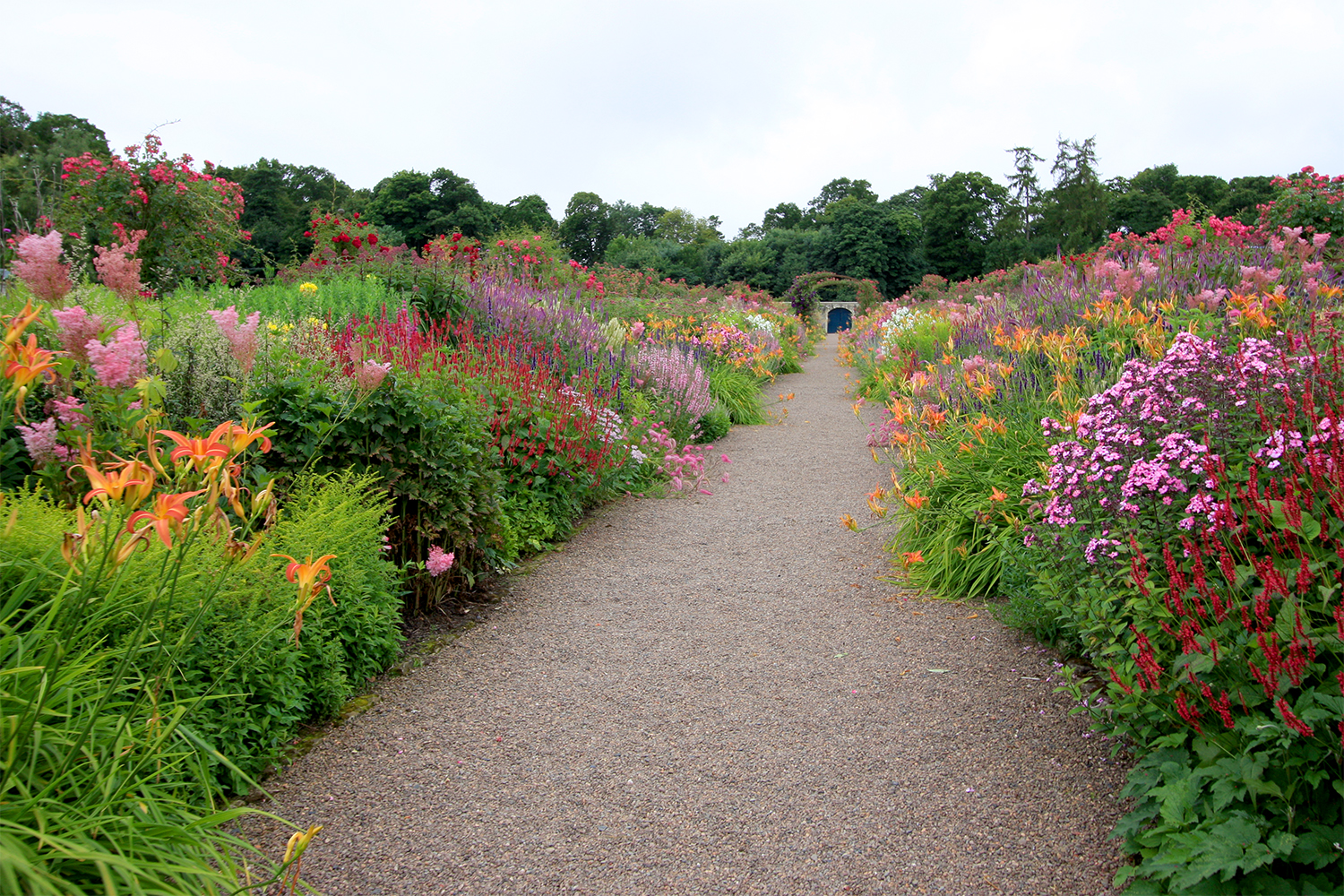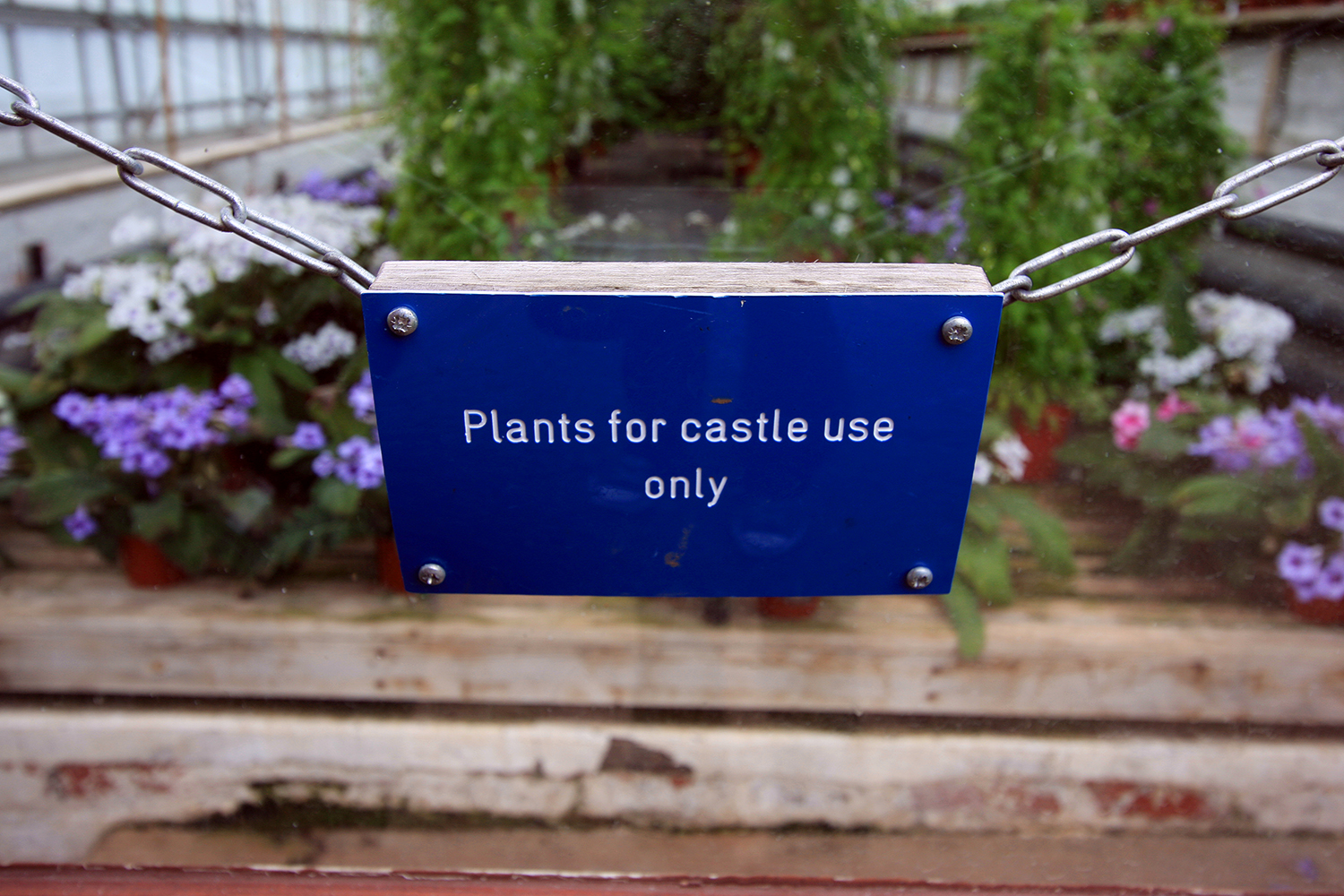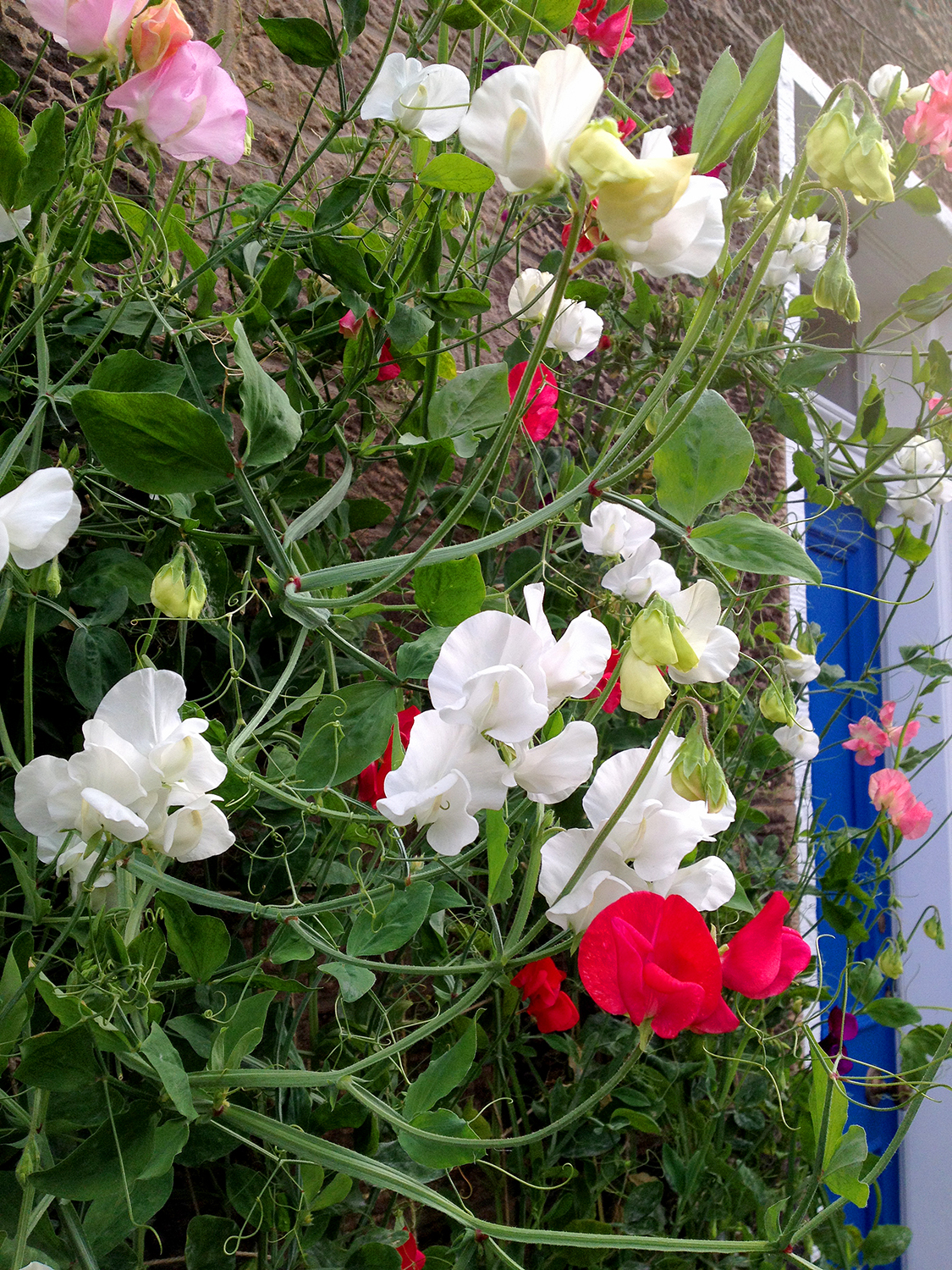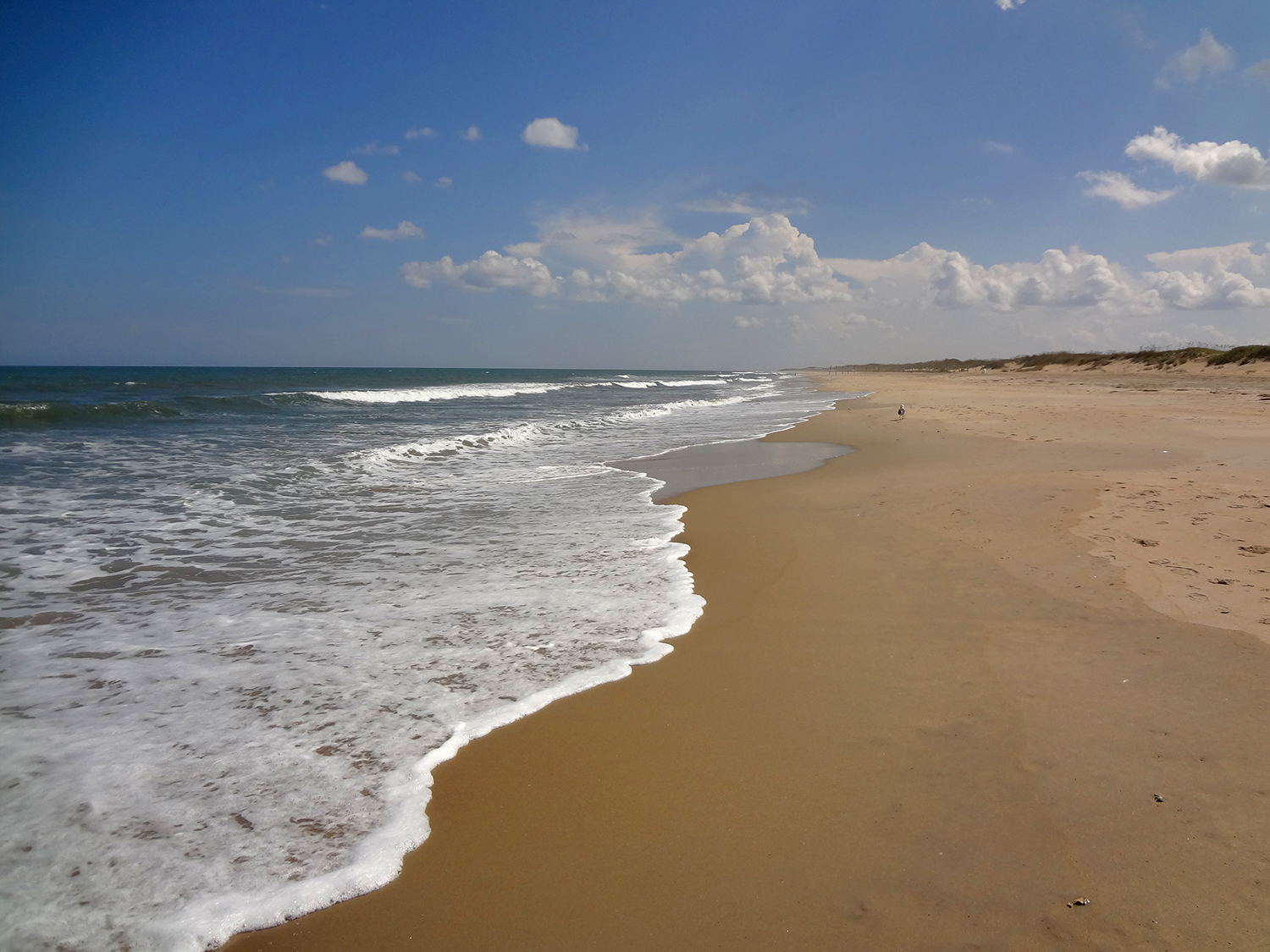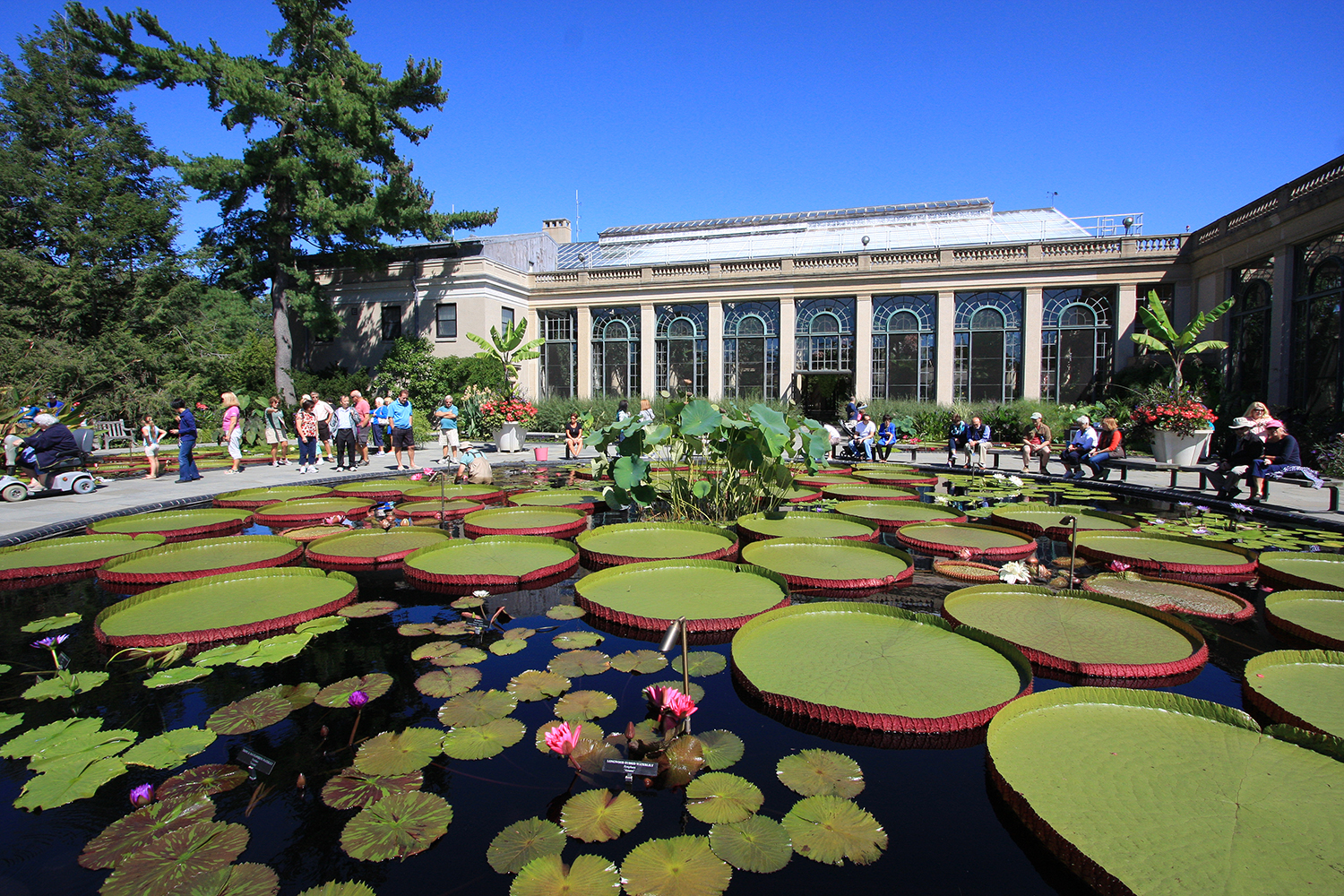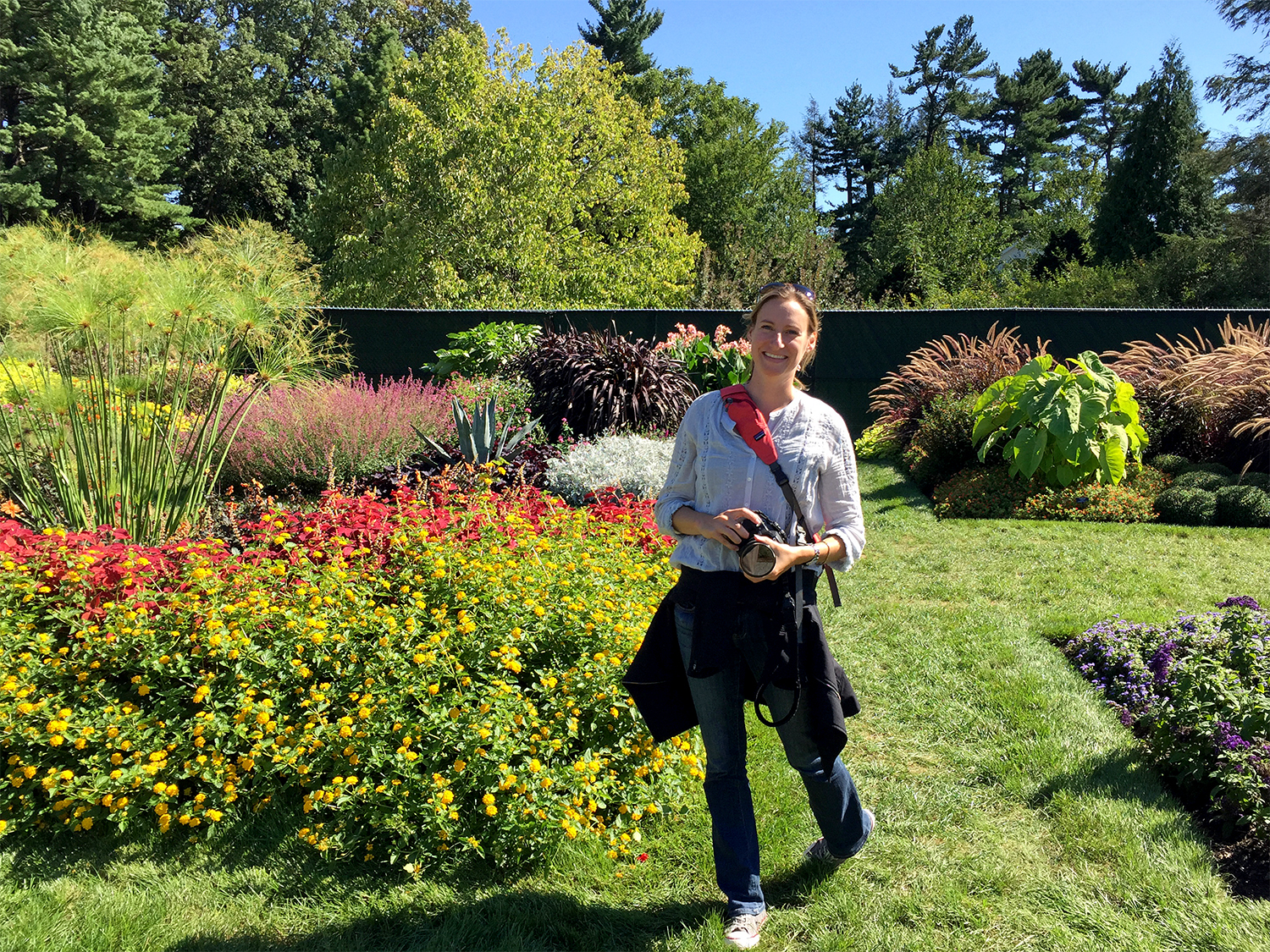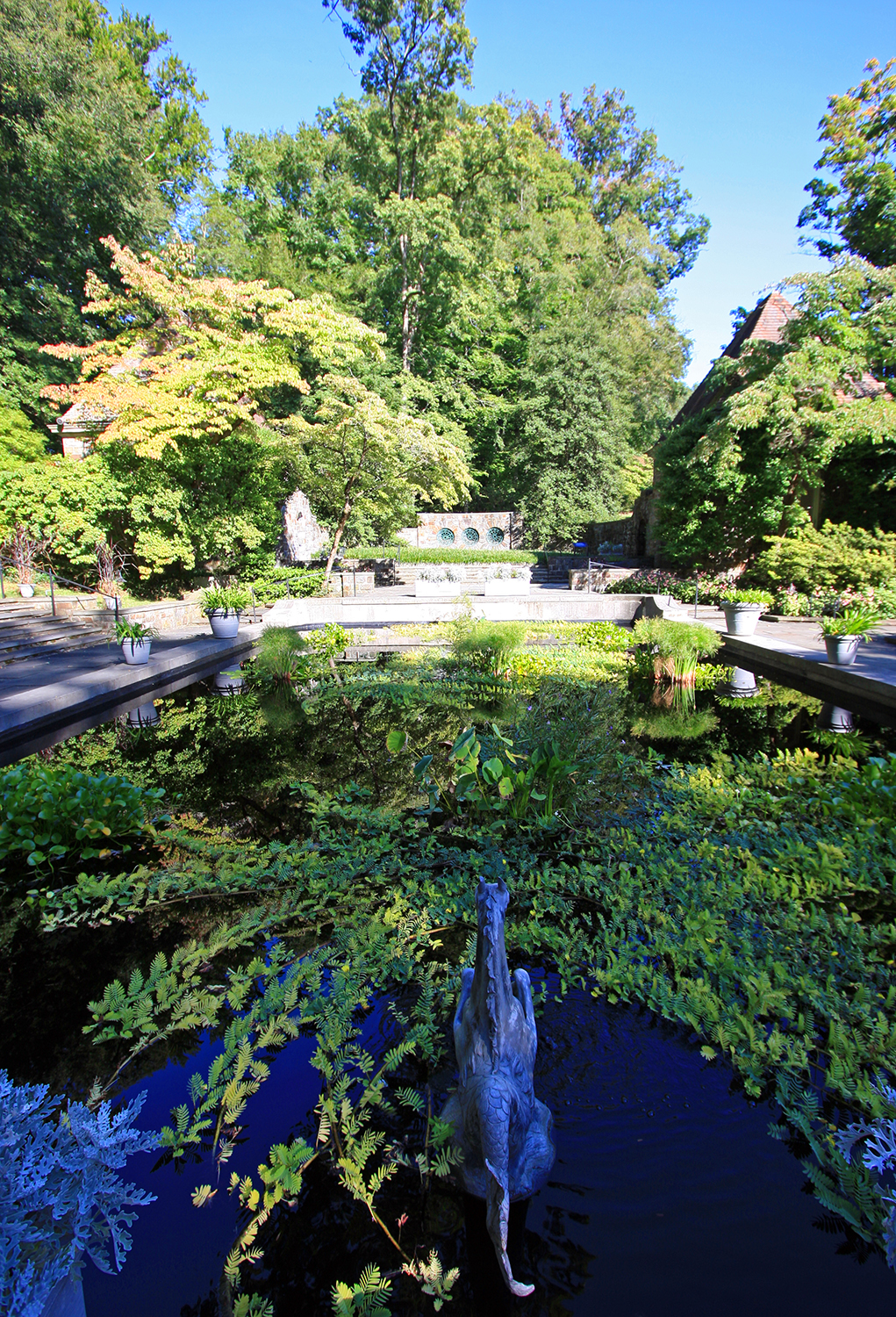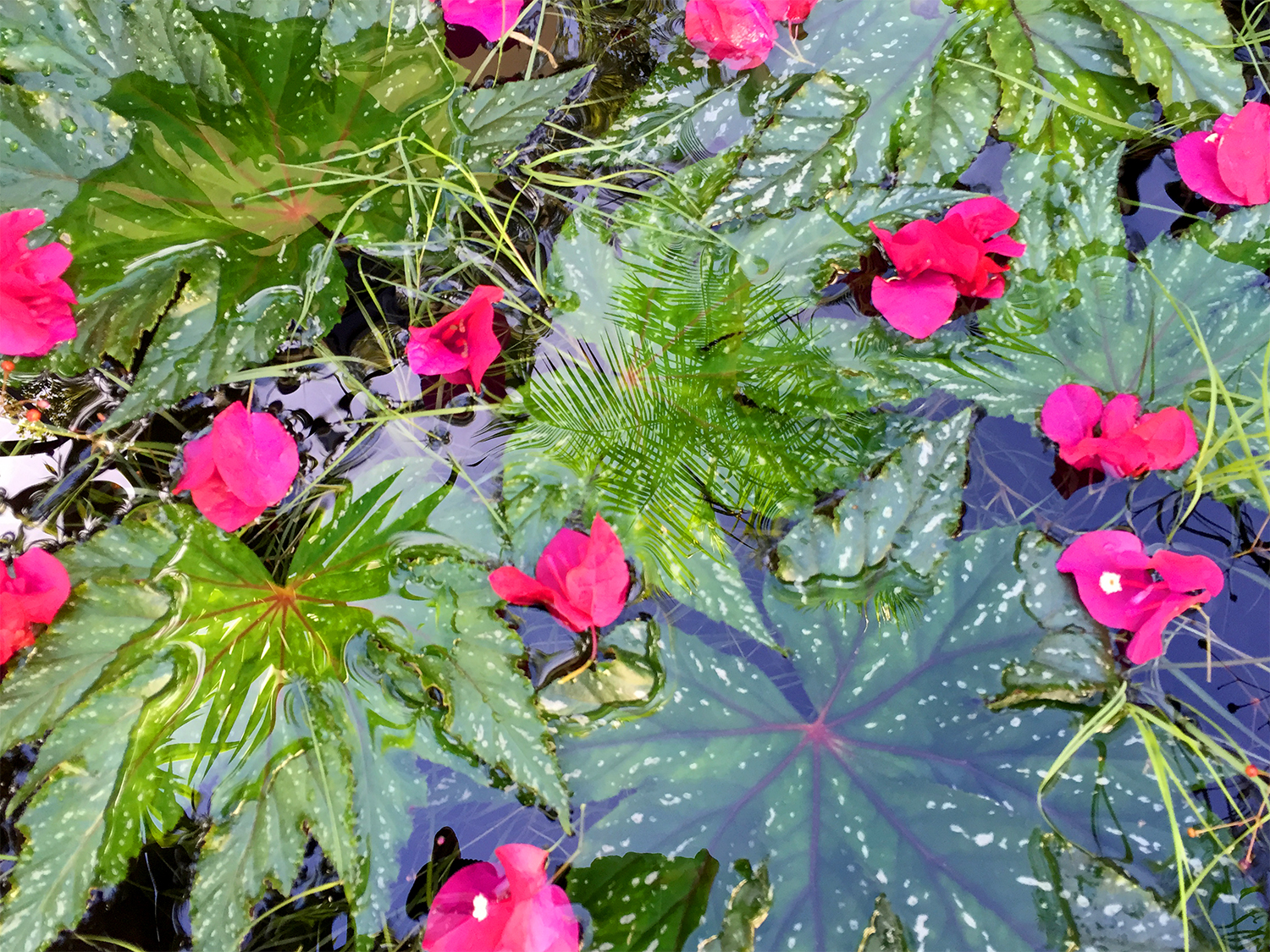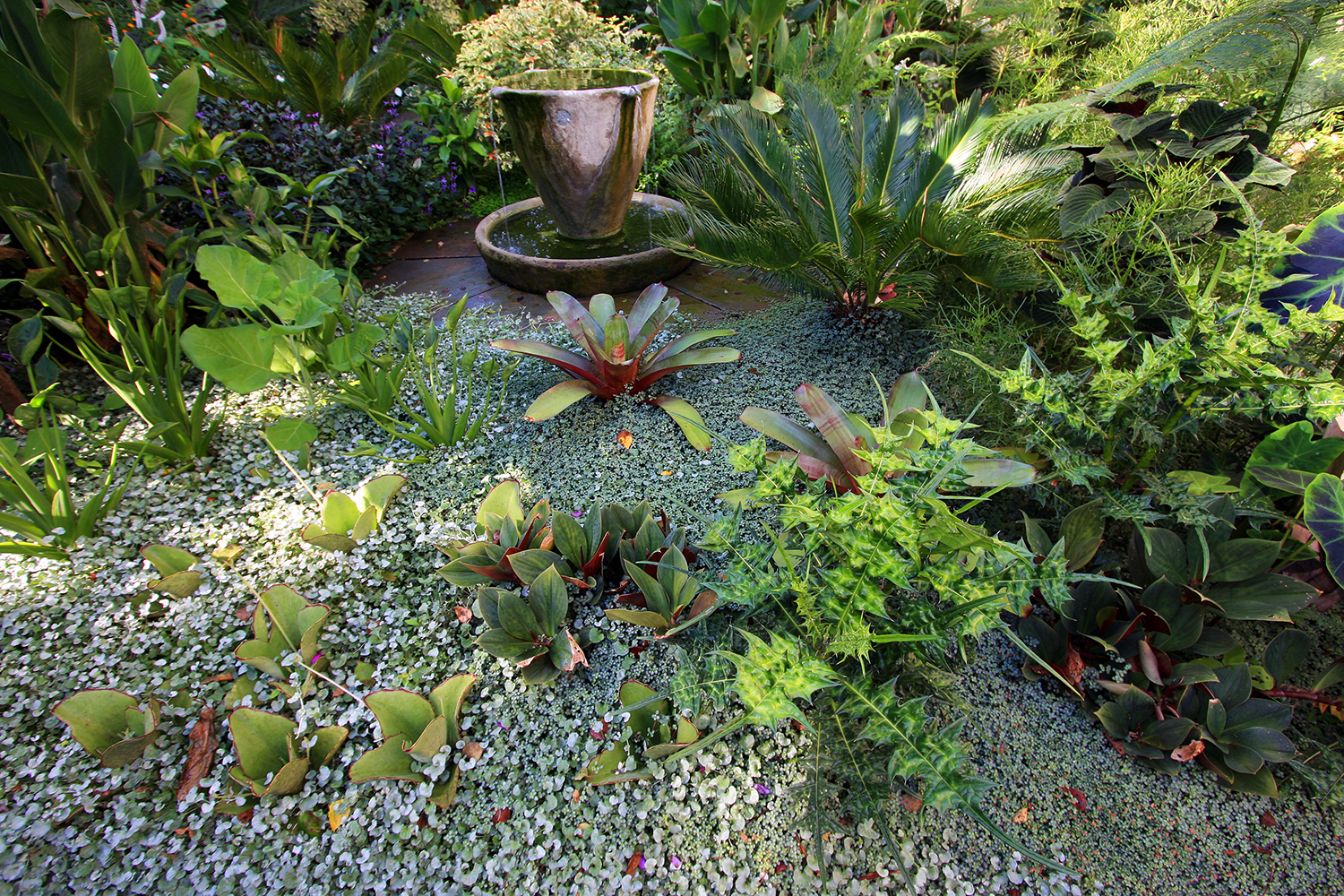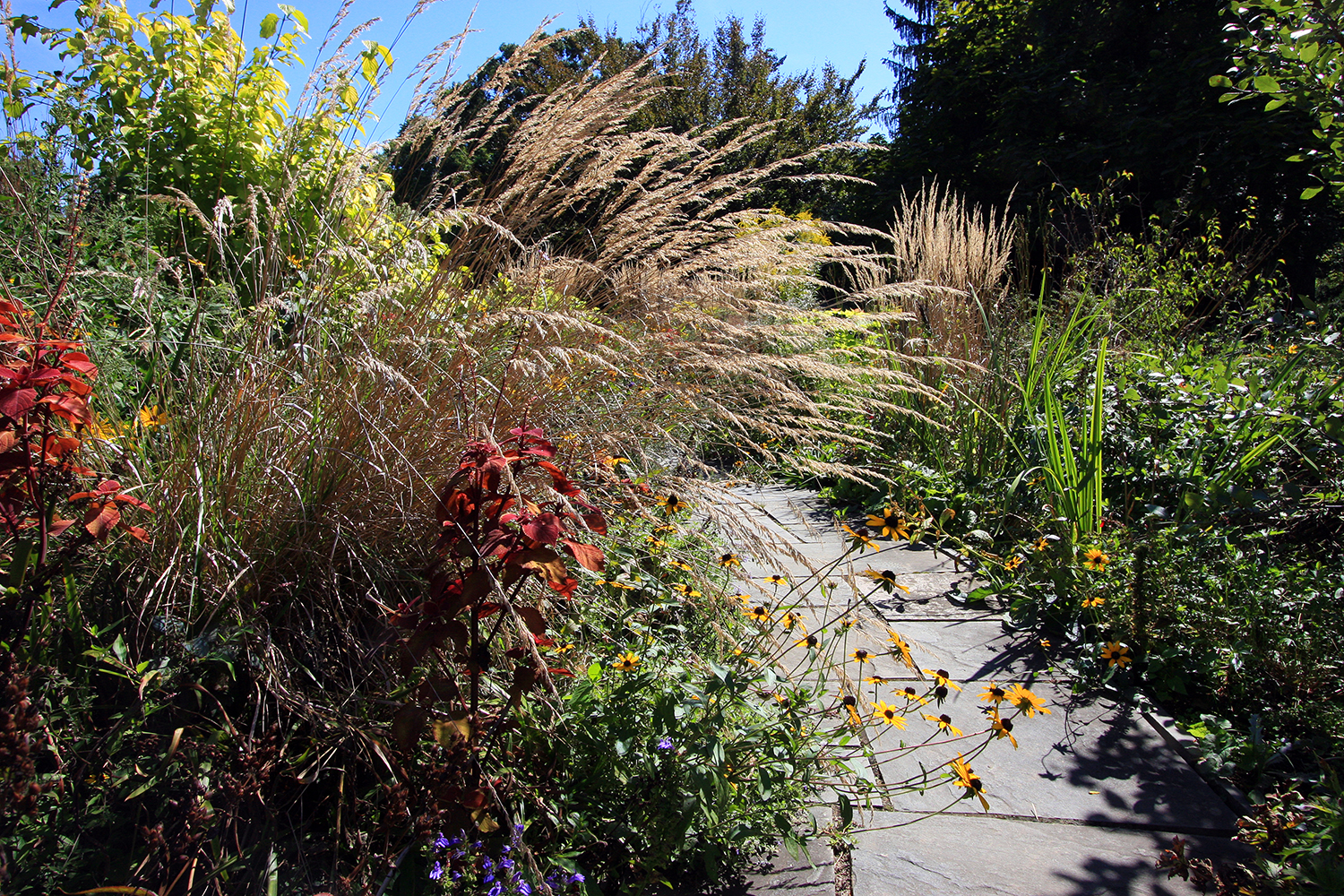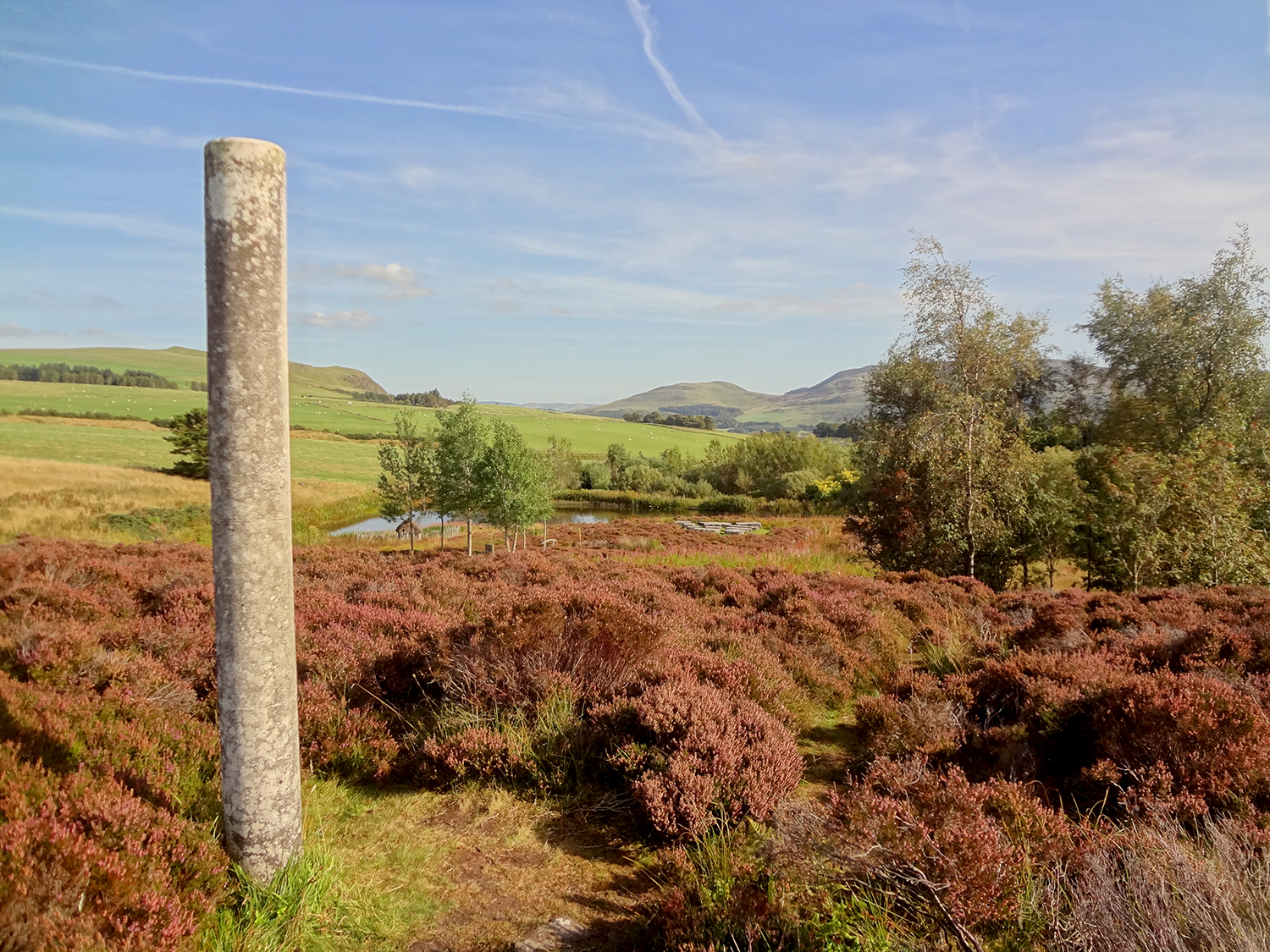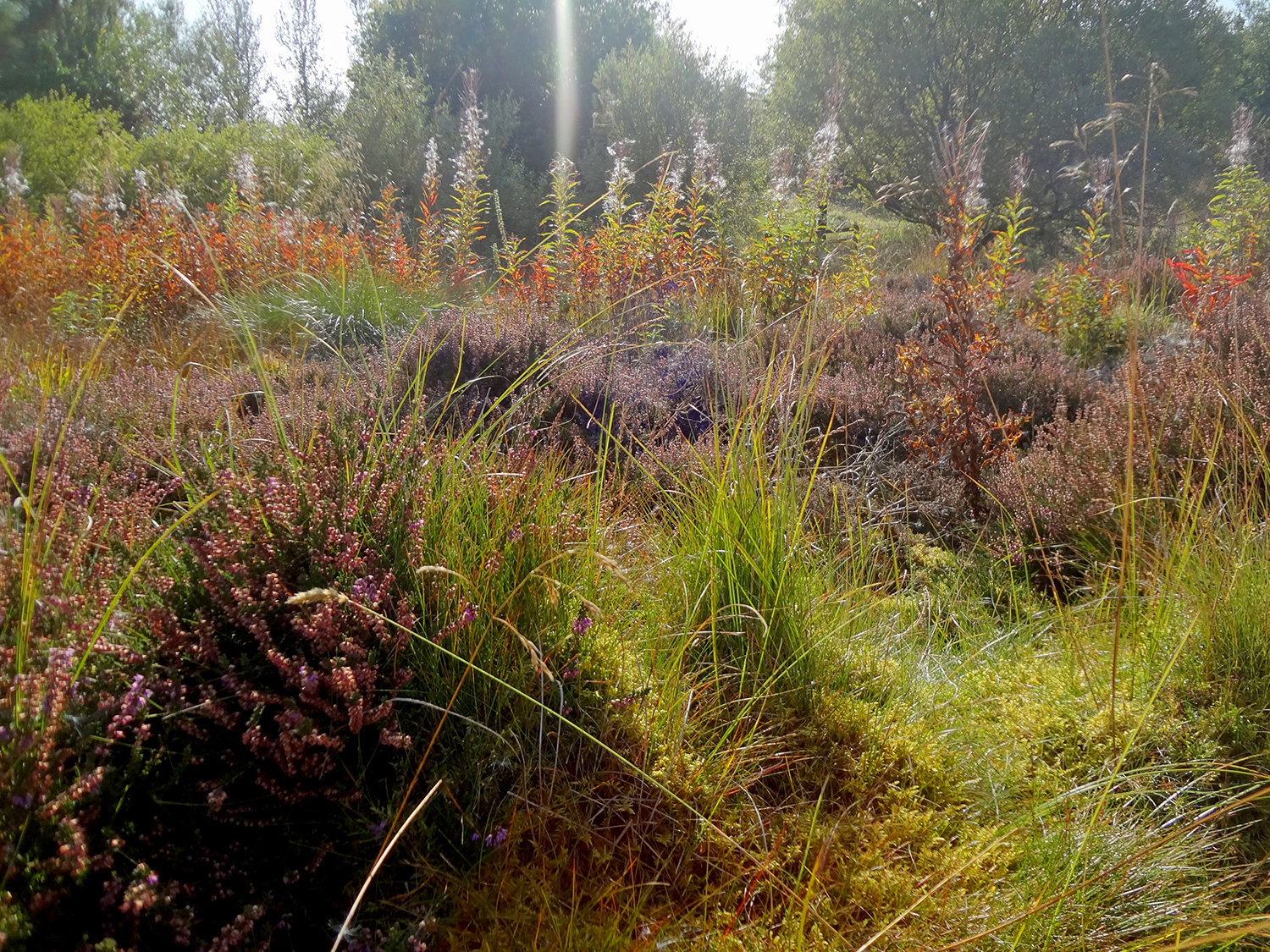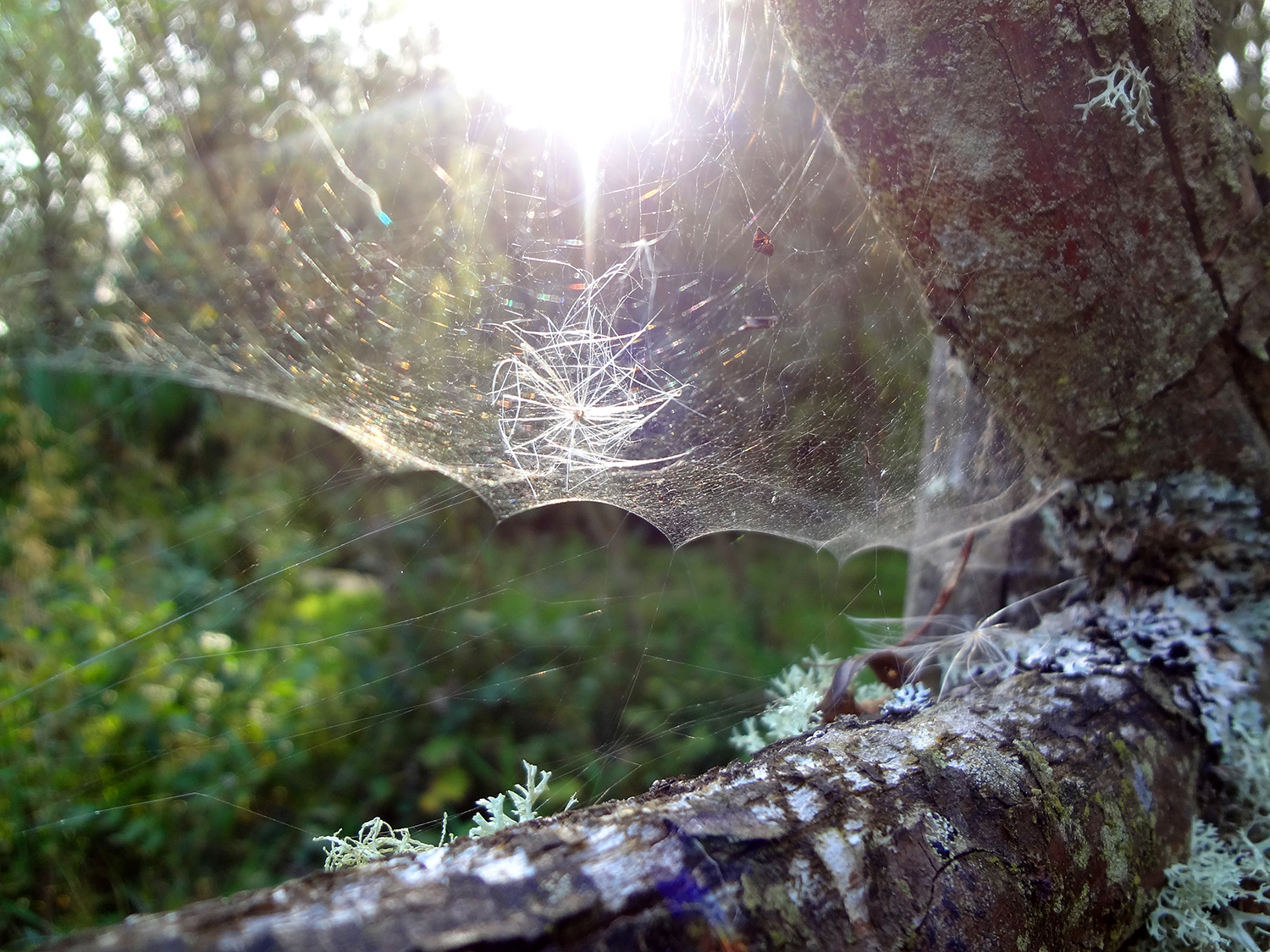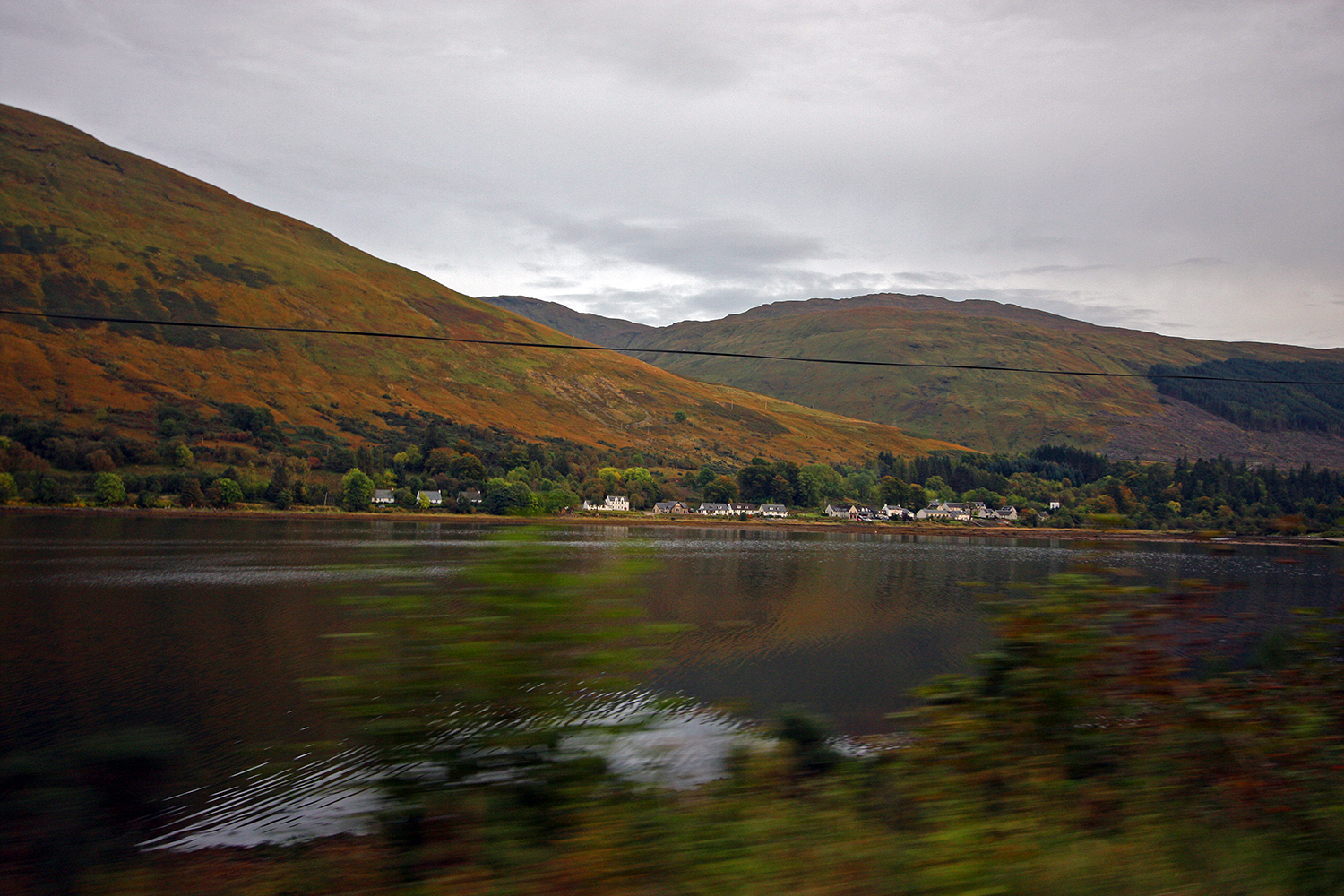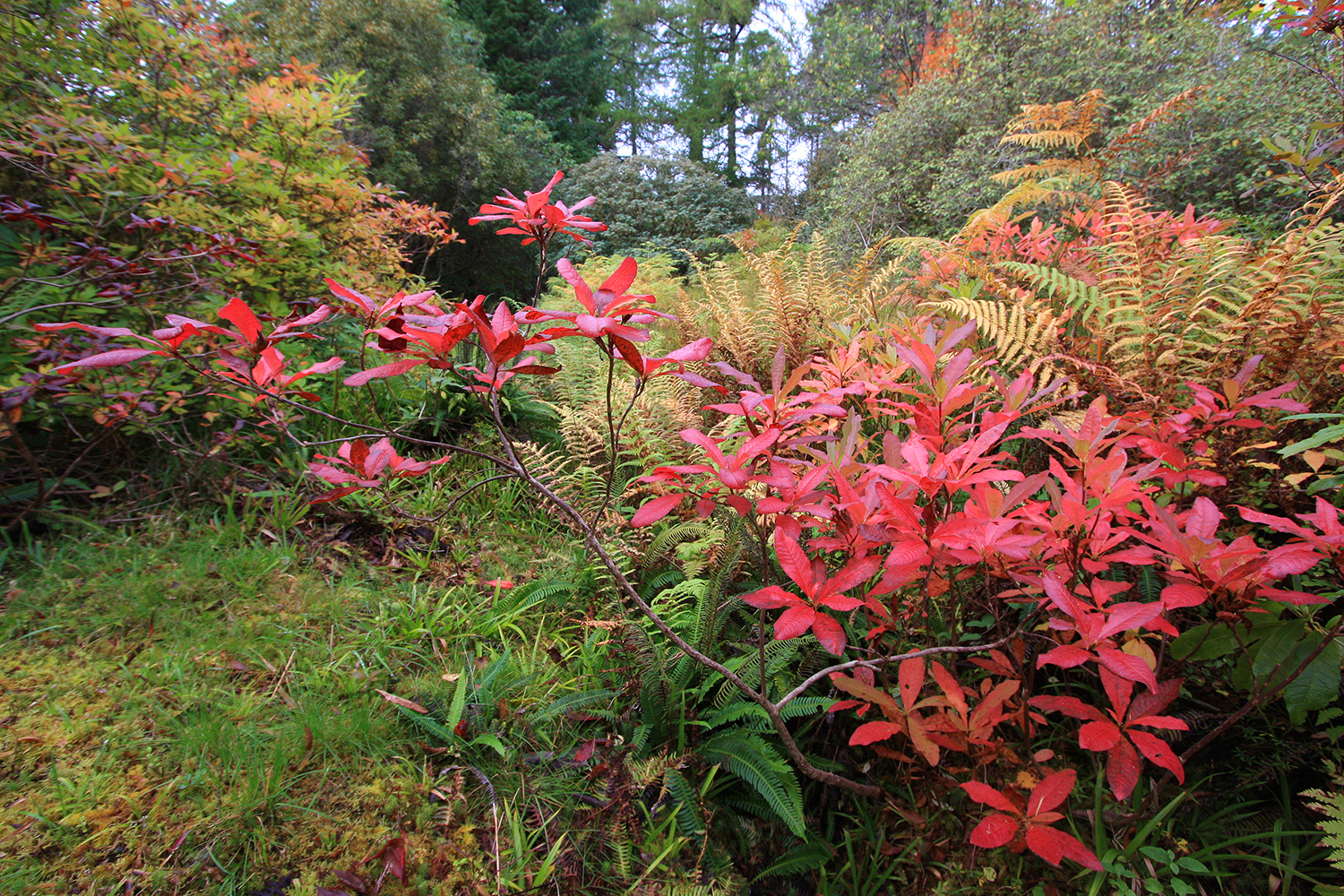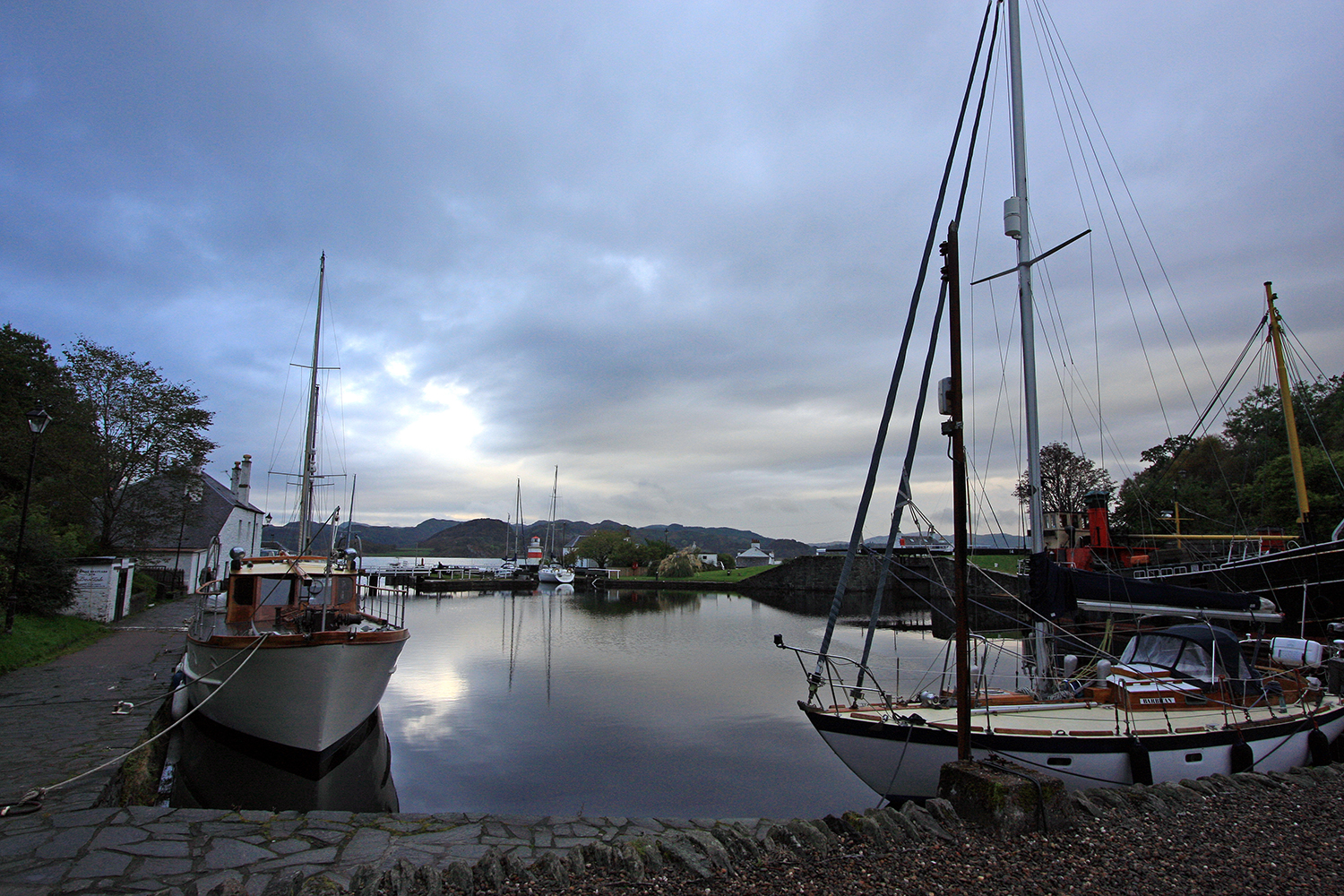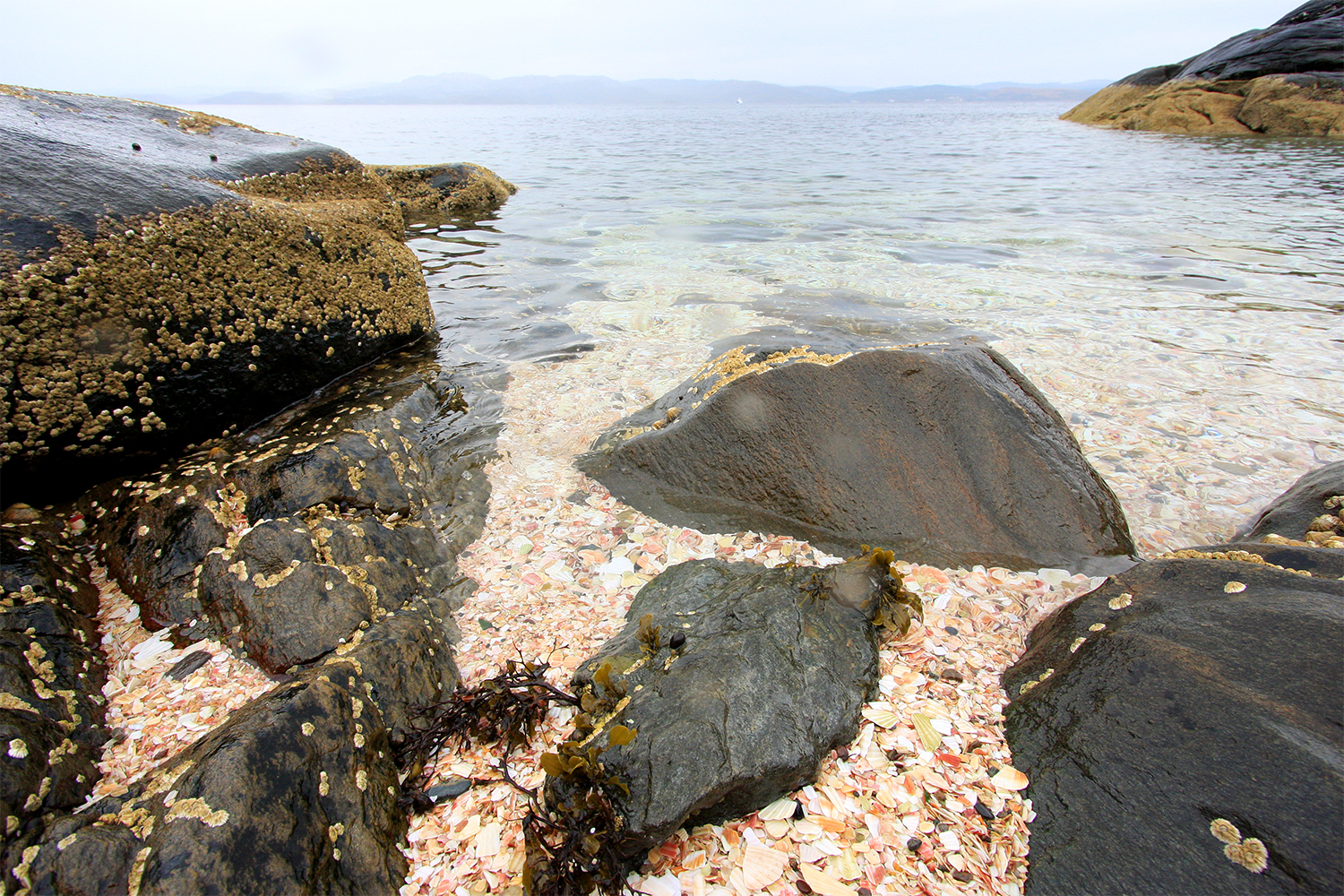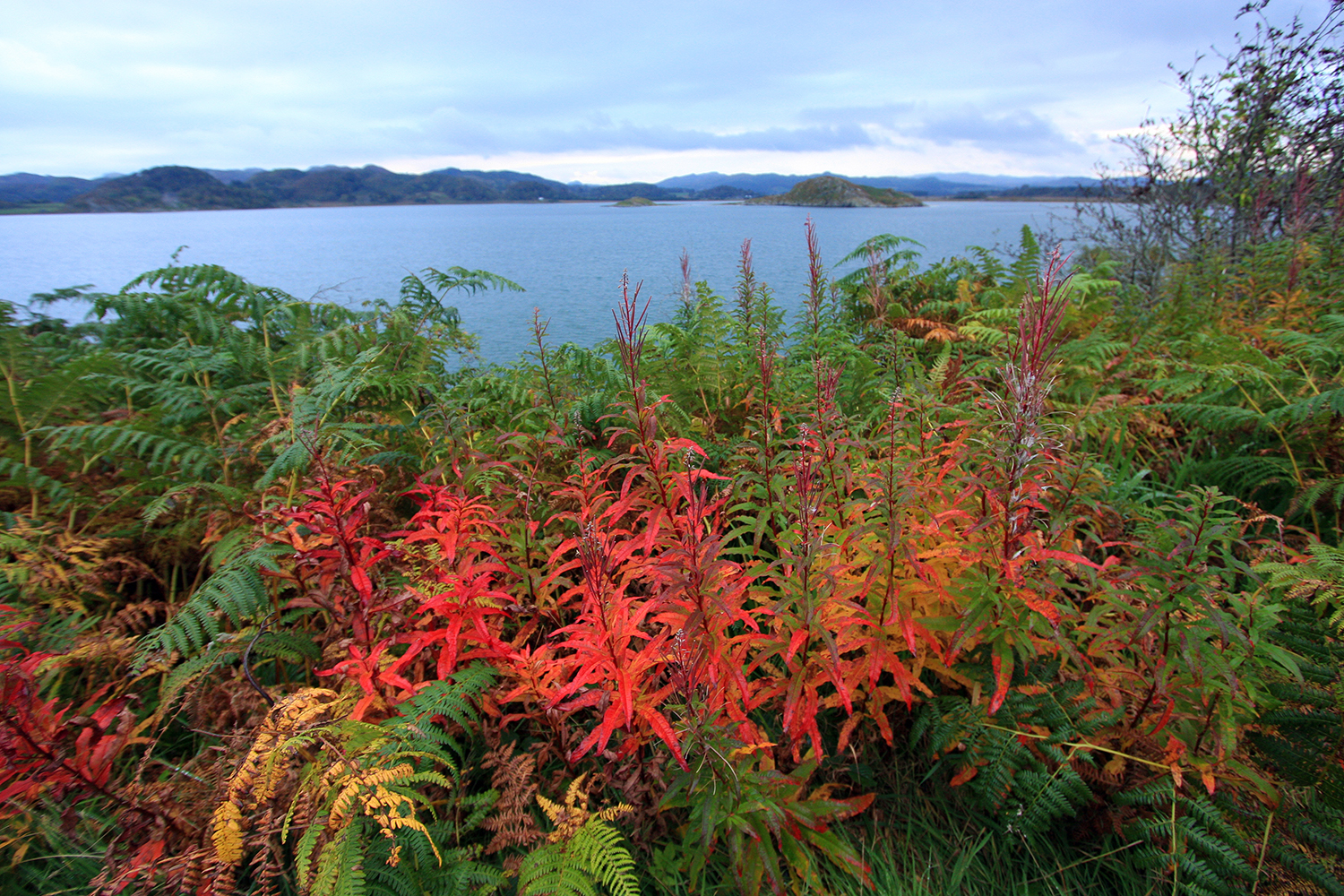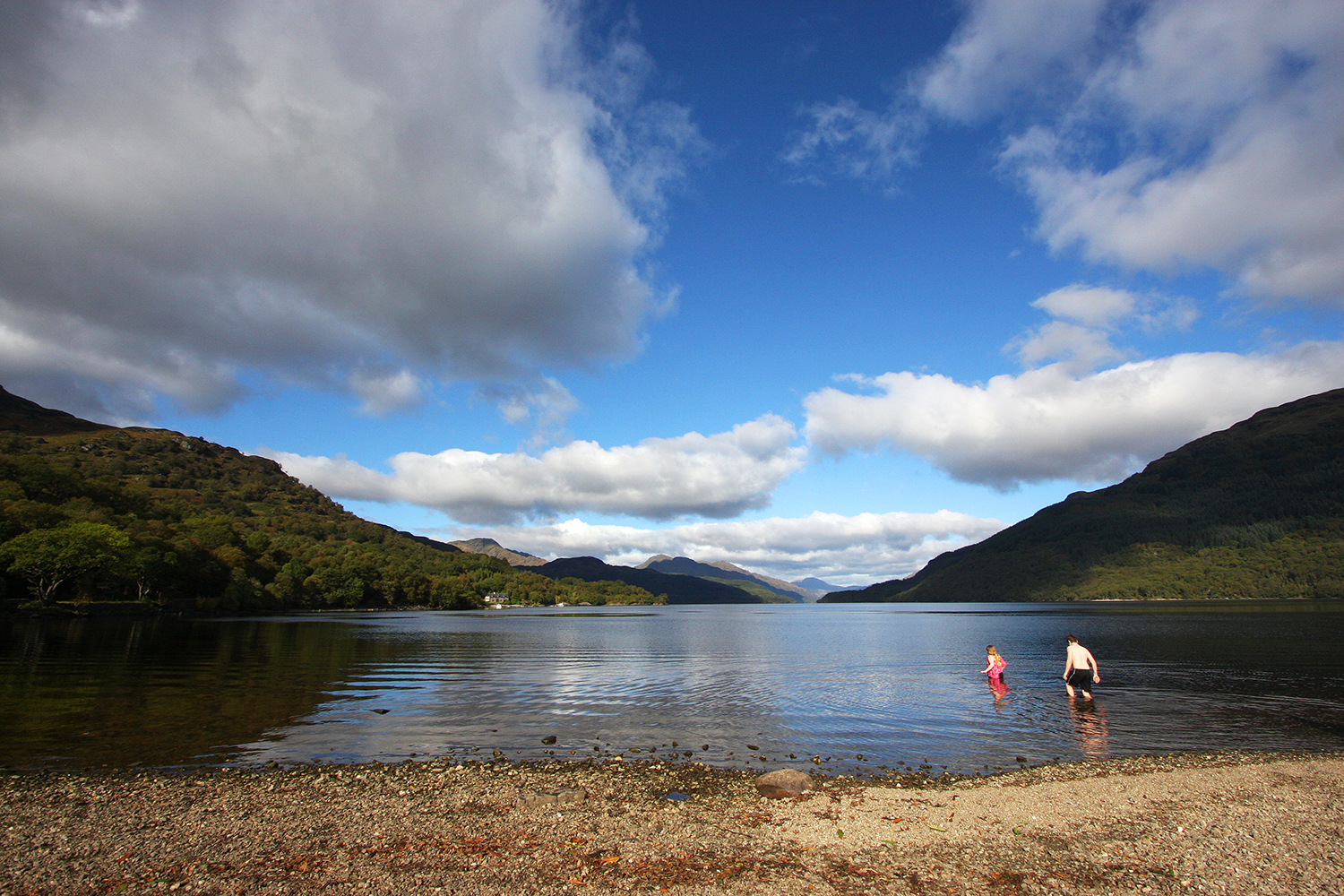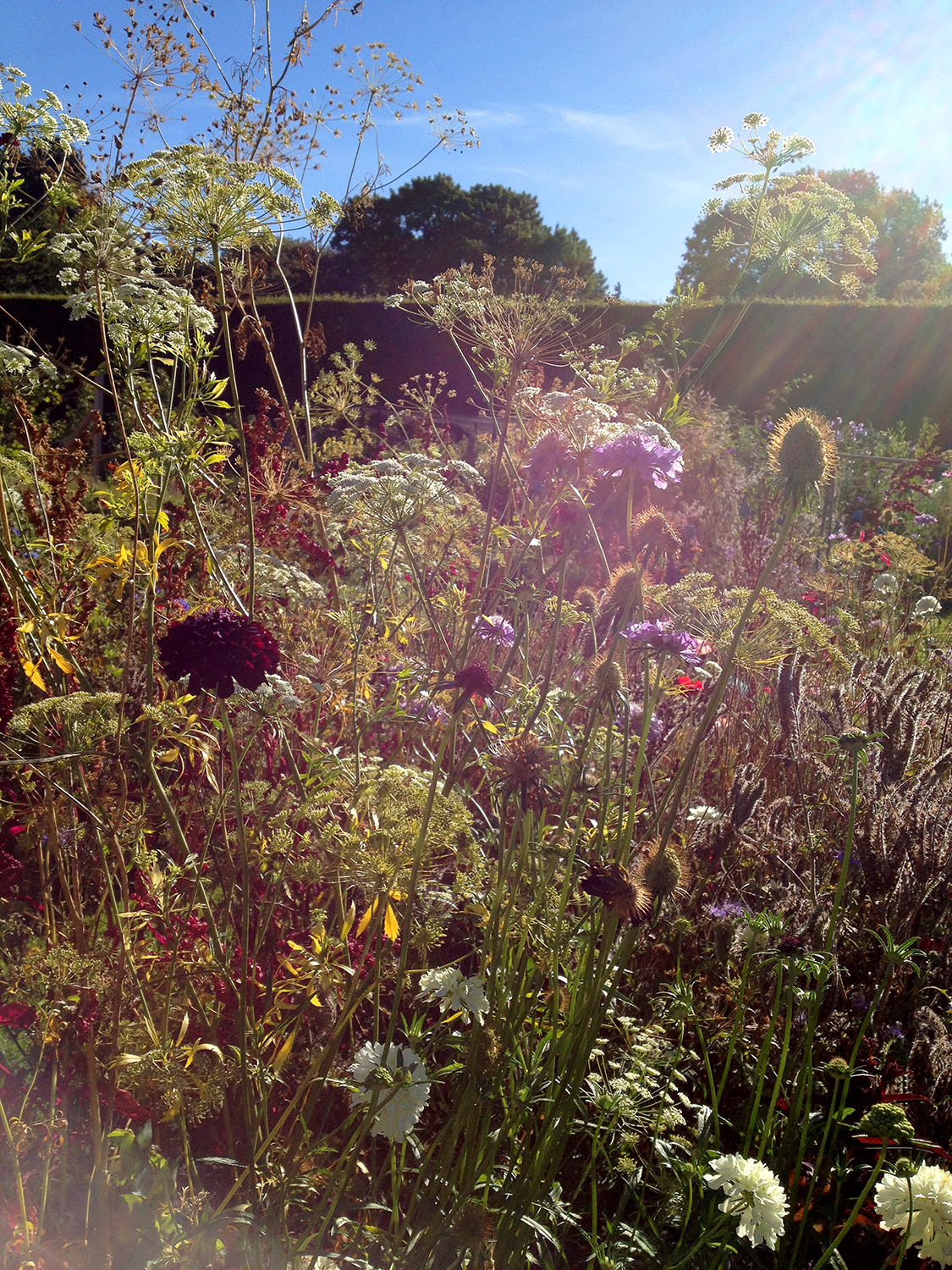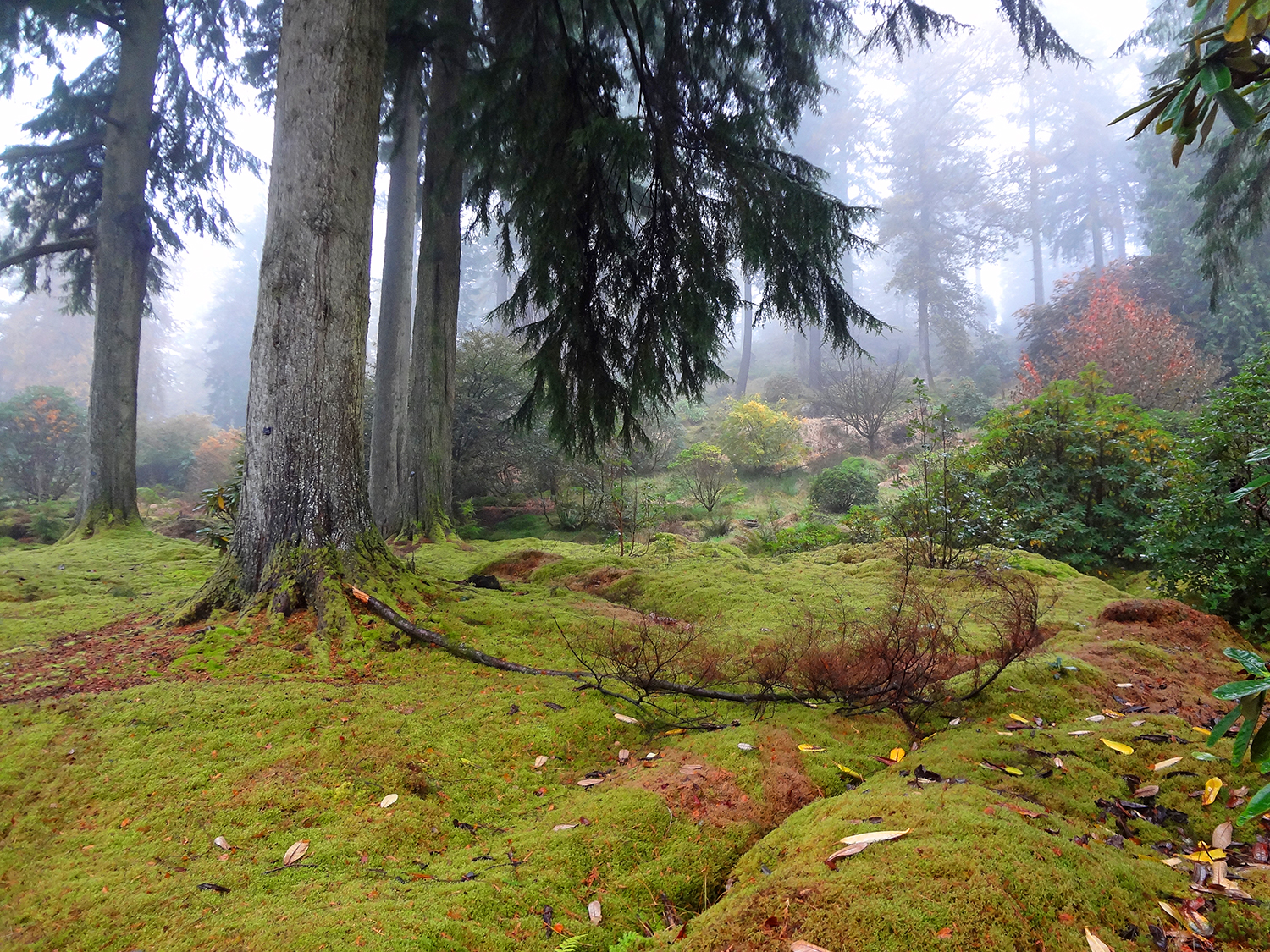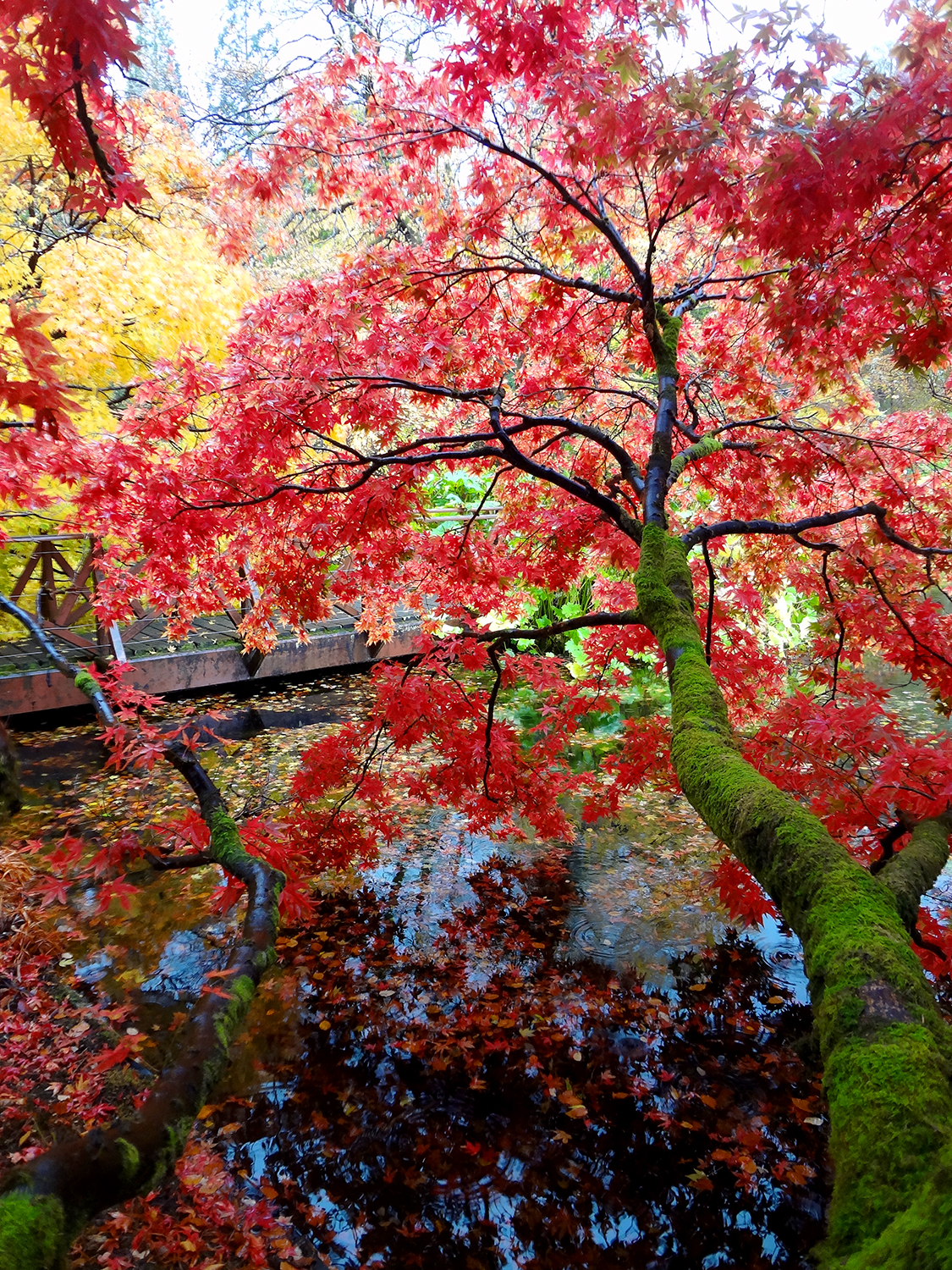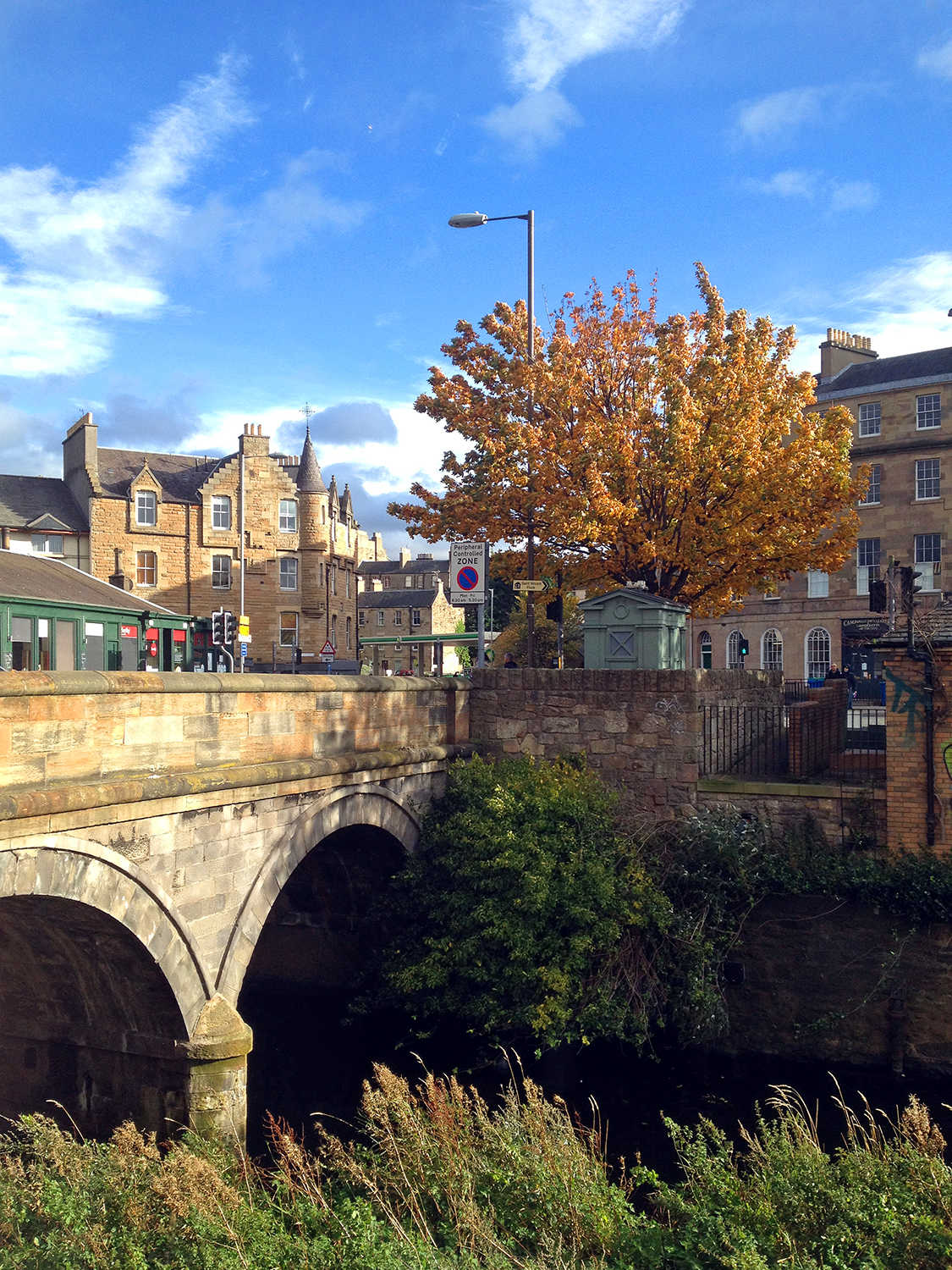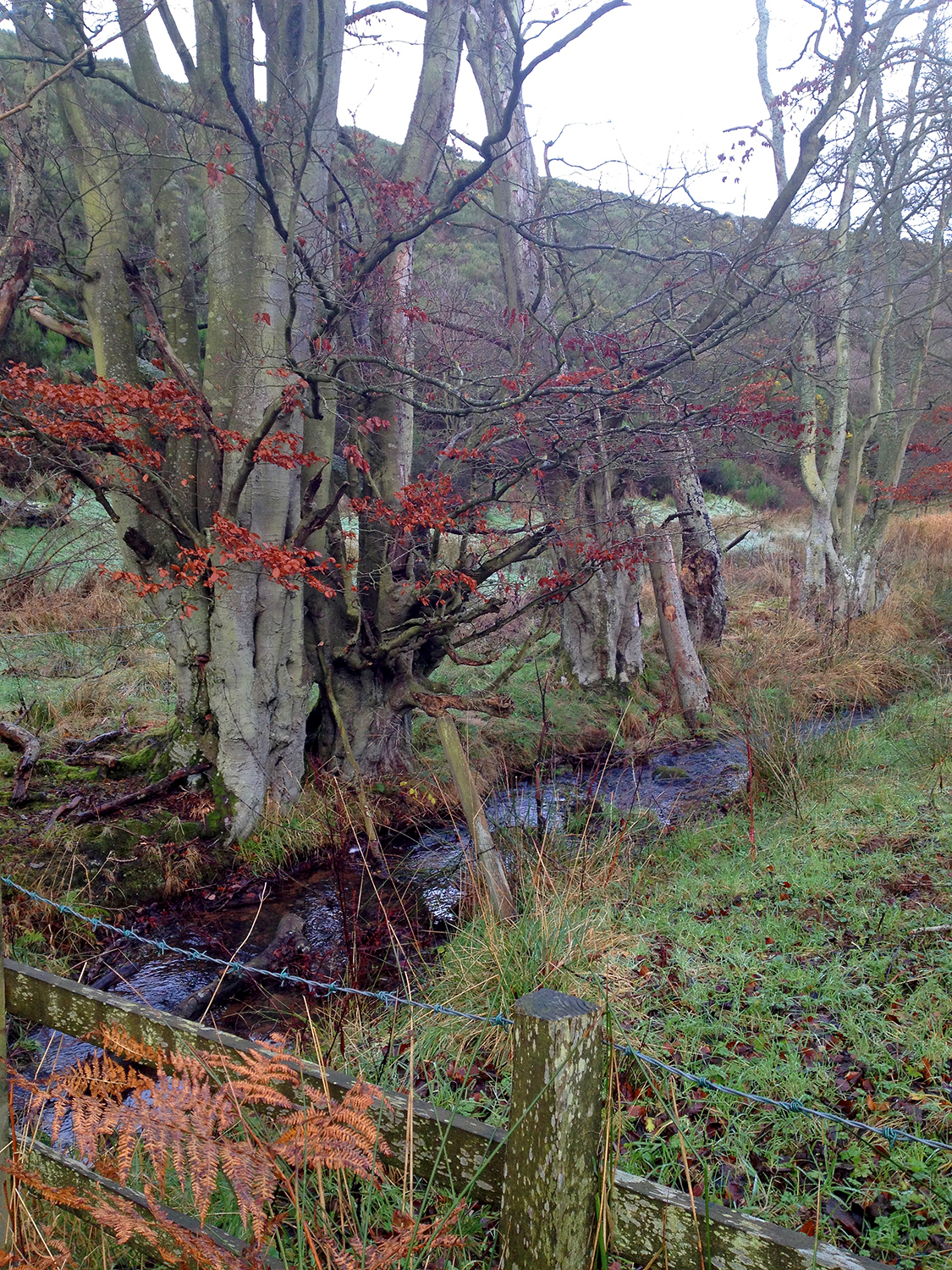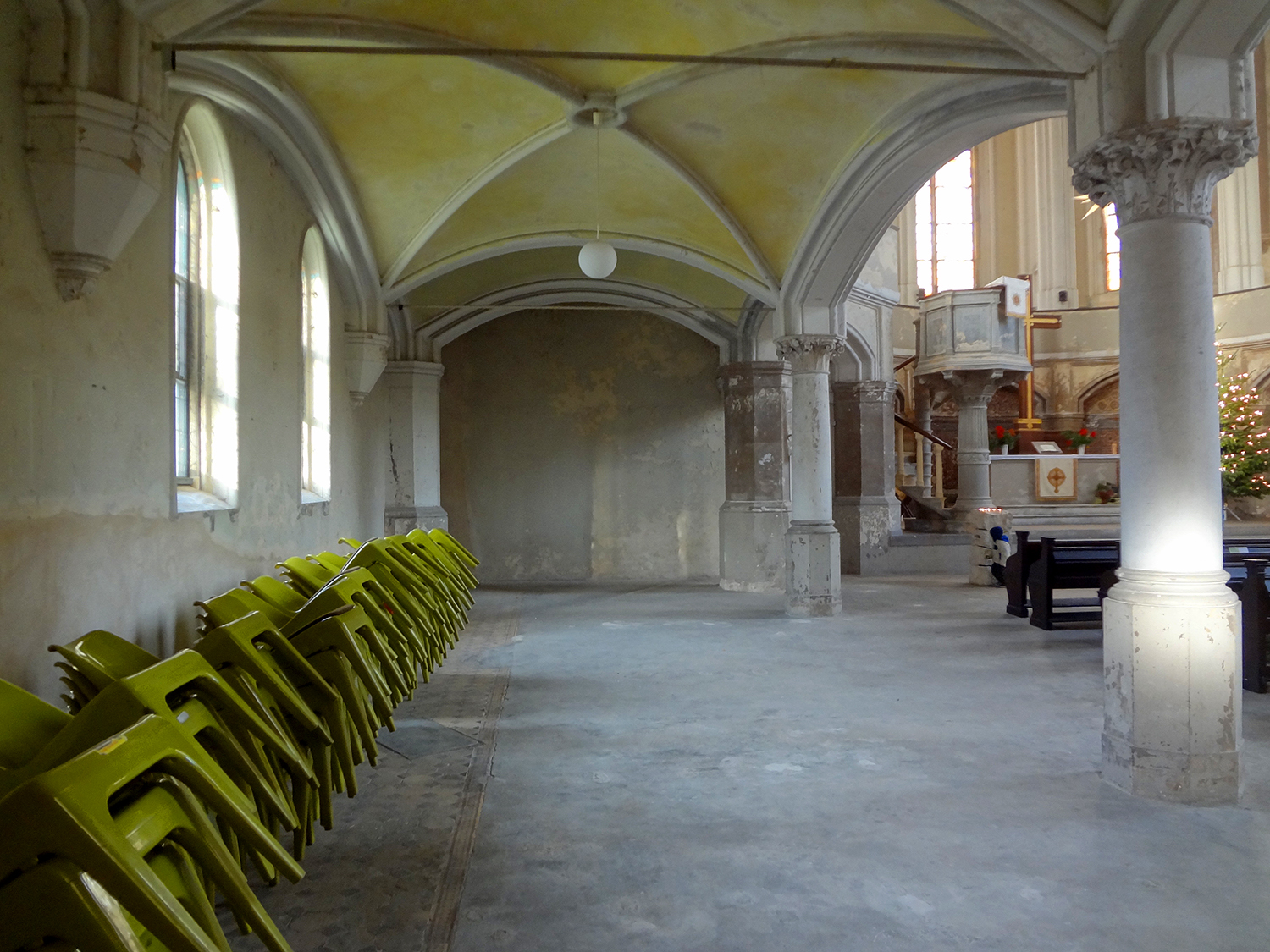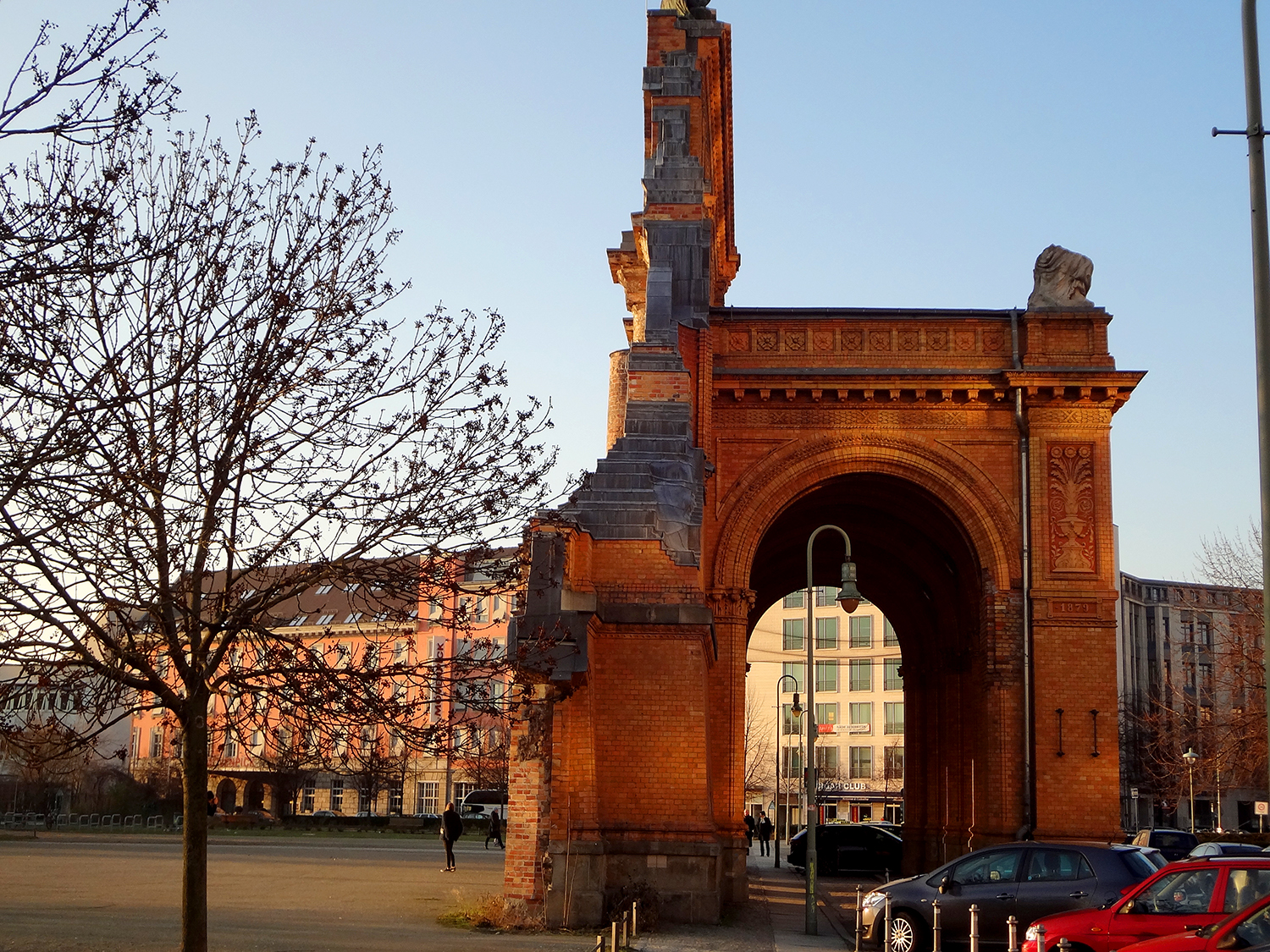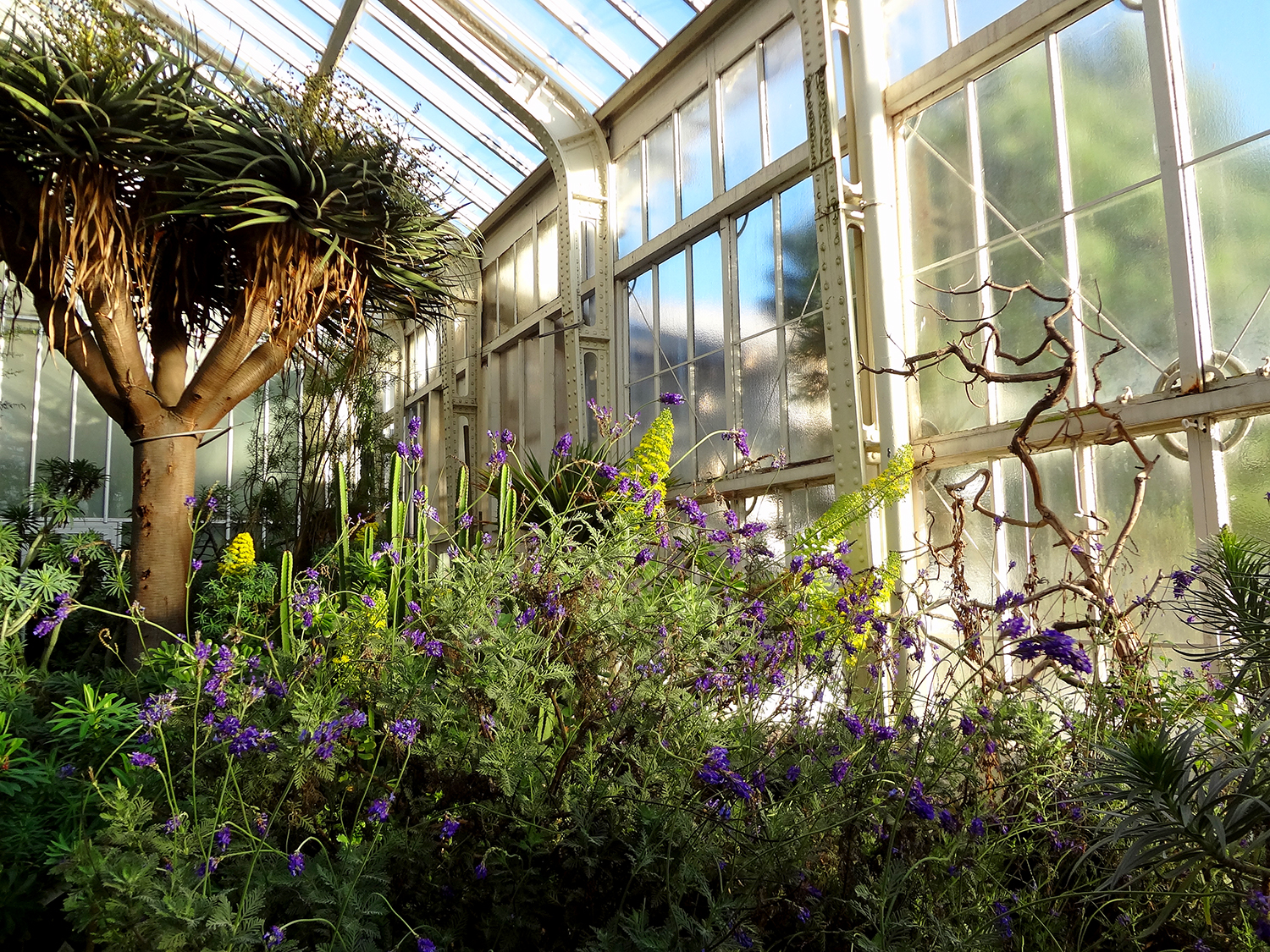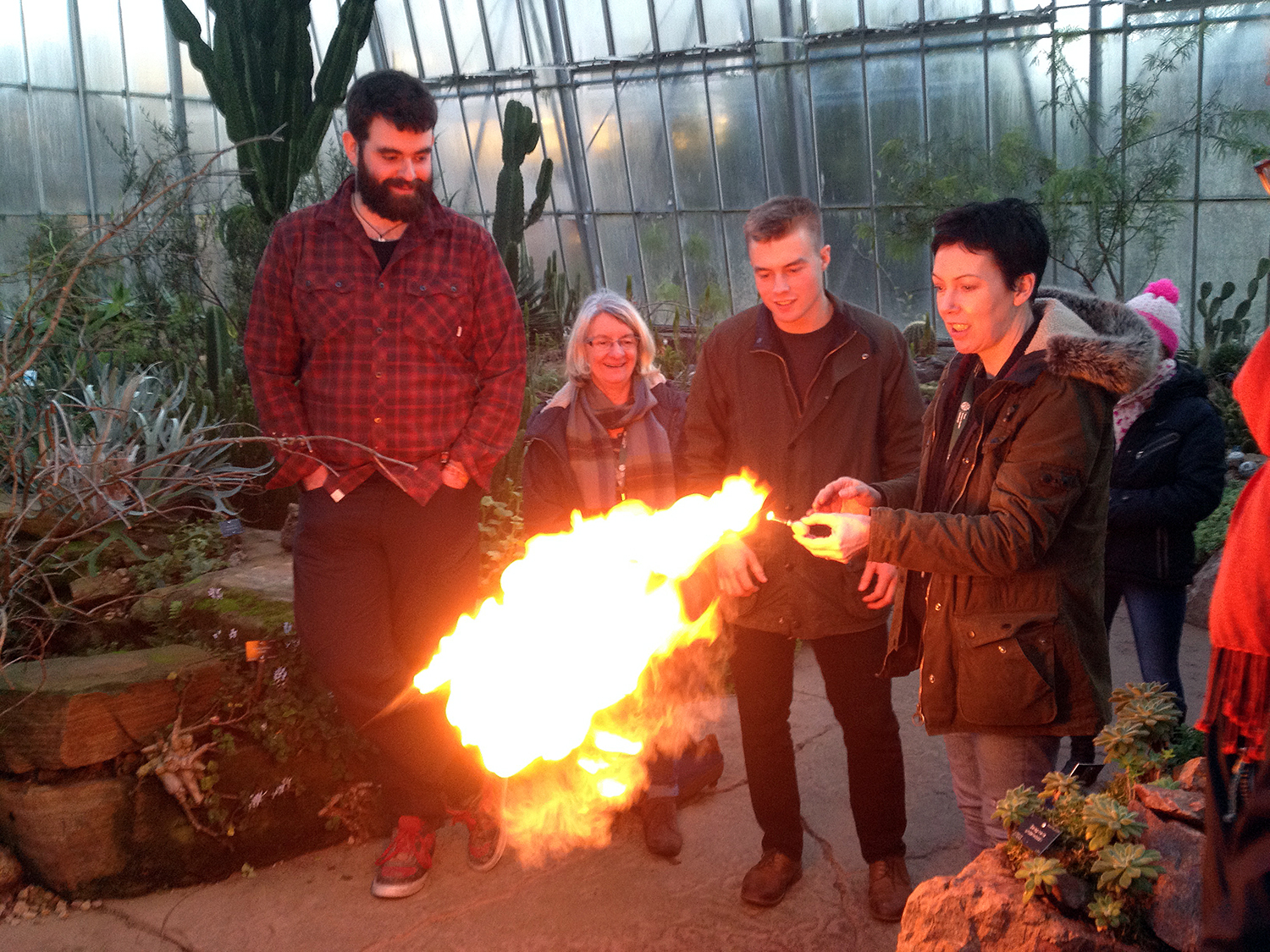Though topiary is the main draw at Levens Hall, the rest of the garden contains a mix of well-done features and some questionable bits. First up is one of the nicest double herbaceous borders I've ever seen, all in shades of blue, yellow, white and purple, capped off by a Lutyens bench at one end. I liked the weathered wood tuteurs in that they looked sturdy but naturally pretty and blended well in the border. I also appreciated how the color and texture of the Nepeta reflected the very worn stone walls and urns. Despite being a bit weather-beaten, the Delphinium were doing their magic trick of injecting the ever-elusive true blue into the composition, and Cephalaria gigantea sprinkled its pale yellow stars just above head height.
The purple, blue and white theme continues near the house with a small foundation planting of Hosta, Nepeta, and climbing vines, including Clematis. The white giant Himalayan lily, Cardiocrinum giganteum, was looking very fine.
There is a willow (Salix) maze, which looks better in this photo than it did in real life. It was pretty overgrown with grass and weeds, and I think being able to see through the maze "walls" defeats the point of a maze. It was, perhaps, just young and may grow into something more substantial. I could see it being popular with children.
A large beech (Betula) hedge encircles part of the garden, and one may walk underneath its canopy for great views reminiscent of looking at the sun from under water. The cripples supporting the branches made for some beautiful natural sculpture.
One of my favorite areas was the old orchard, which in spring is planted with red tulips in square patterns under each tree. That must look great, but I enjoyed the pattern left over once the tulips have been mown off, and I think this is an attractive way to deal with the inevitable messiness that follows a spring-flowering bulb display. Making a feature out of "disorder," or manipulating ephemeral spaces through periods of transition so they still contribute to the overall design, is something I'd like to try in my own garden.
A pretty substantial network of pleached lime (Tilia) tunnel arbors impressed me with its horticultural skill. Attempting to get this many living trees to grow at almost 90 degree angles is a challenge, and these were just about perfect. I think the secret lies in the strong timber framework just barely seen in this photo. I imagine that without it in place it would be hard to achieve this precise effect.
The pleaching and extensive topiary at Levens bring to mind another garden that I really enjoy in pictures, having not yet visited in person: Arne Maynard's Allt-y- bela:
Emerging from one exit of the pleached lime arbor one sees this water feature, which didn't do much for me. Maybe in a sunny, warmer day it would feel refreshingly welcoming, but on a cool, stormy day it left me, well, cold.
The bowling green/croquet lawn is bordered by masses of Lychnis coronaria with some tall yellow spikes of Verbascum. This combination didn't work for me, and the border's position right next to the beautiful double blue border made it look like Cinderella's ugly stepsister.
Finally, the herb garden showed off the very flashy golden hops (Humulus lupulus 'Aureus'), one of my favorite climbers. More red Tropaeolum speciosum can be seen climbing through the yew on the left side of the photo.
That's it from Levens Hall, a fantastic historic garden that is well-worth your time, rain or shine. Up next, the journey continues south to pay homage to one of my horticultural heroes, Joseph Paxton, at Chatsworth.
